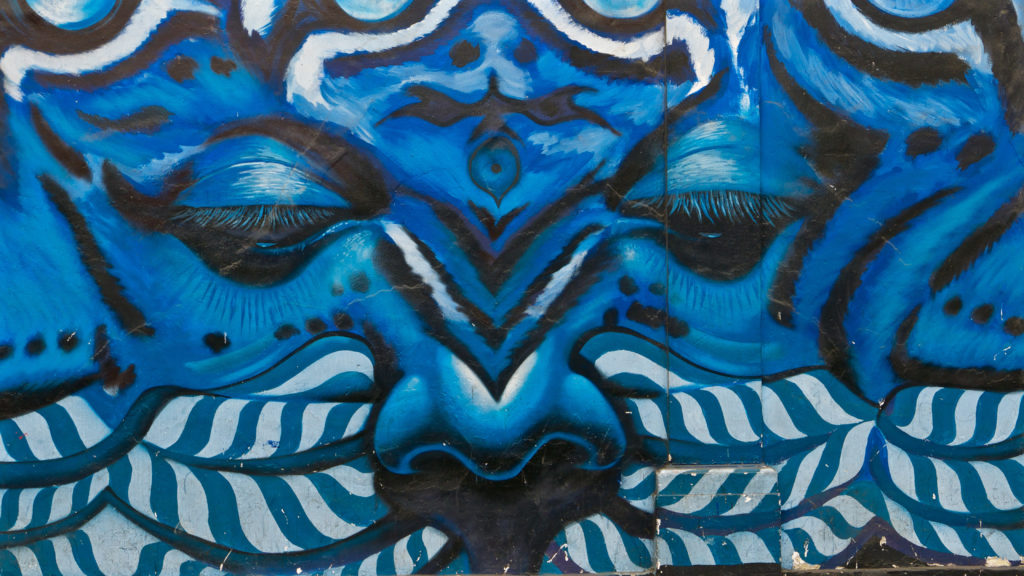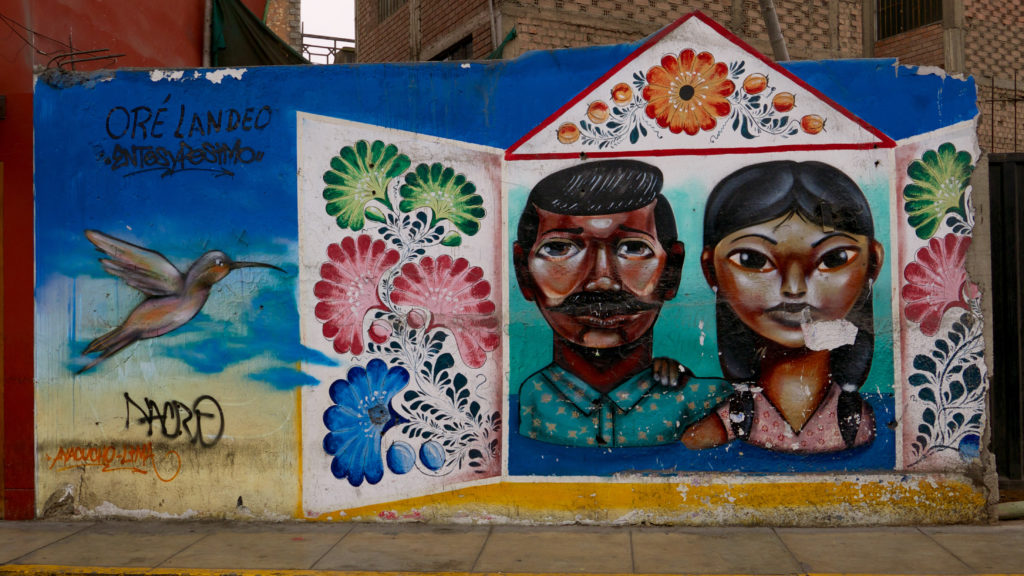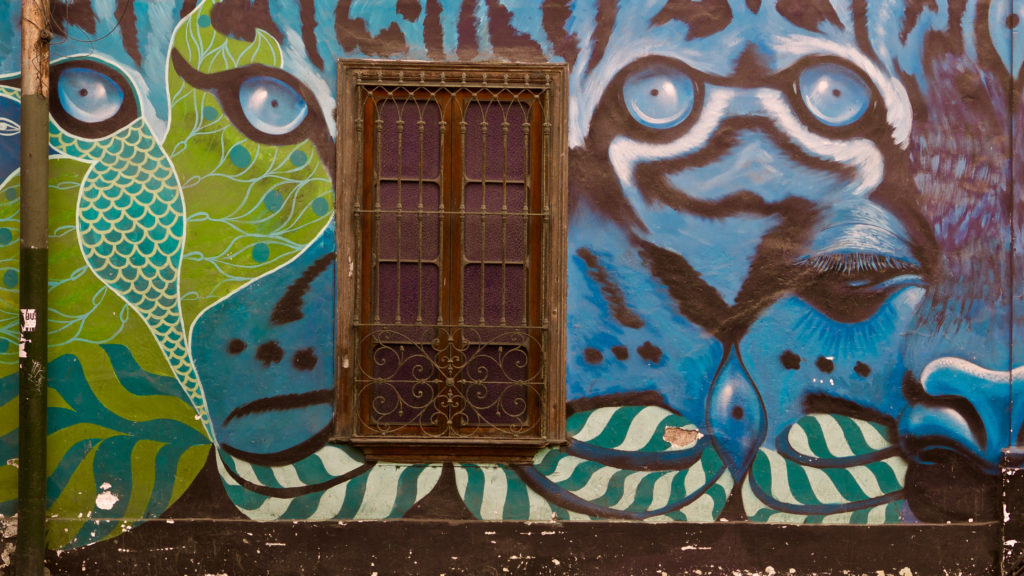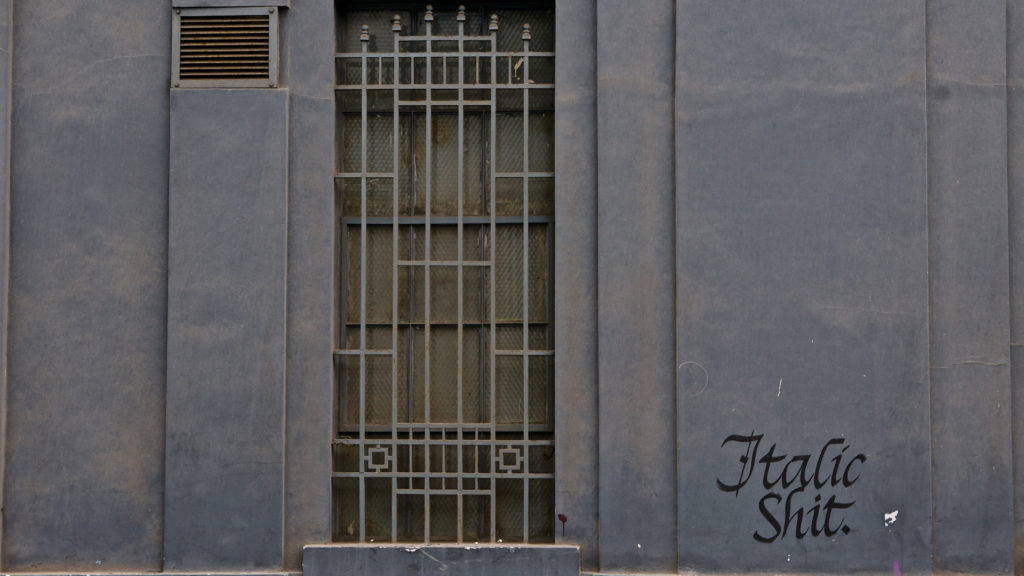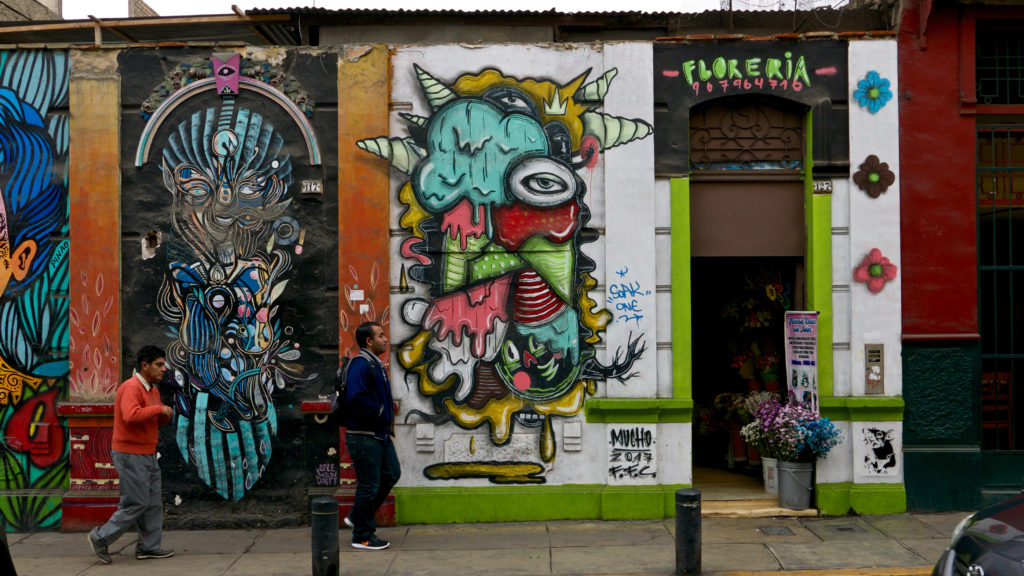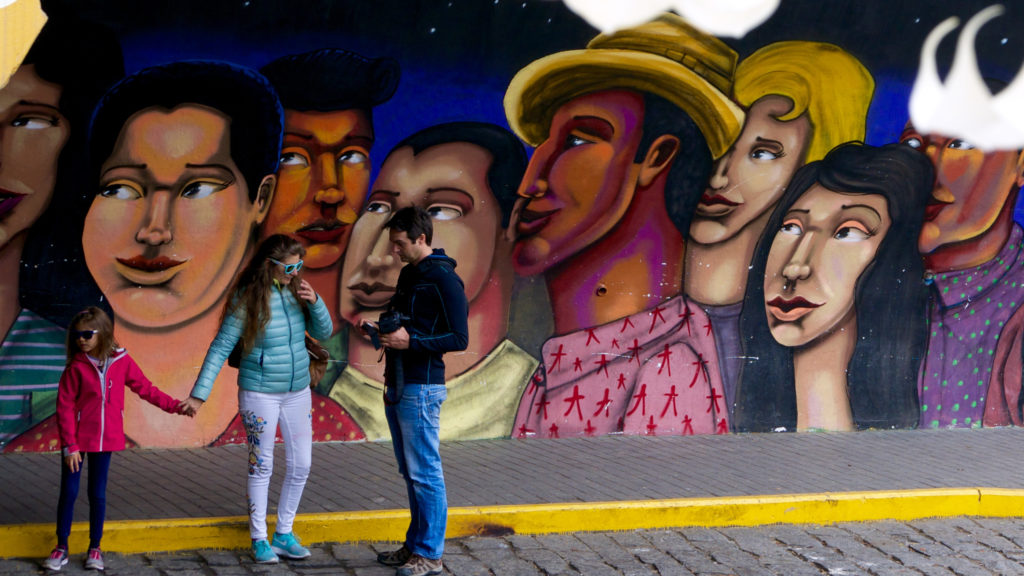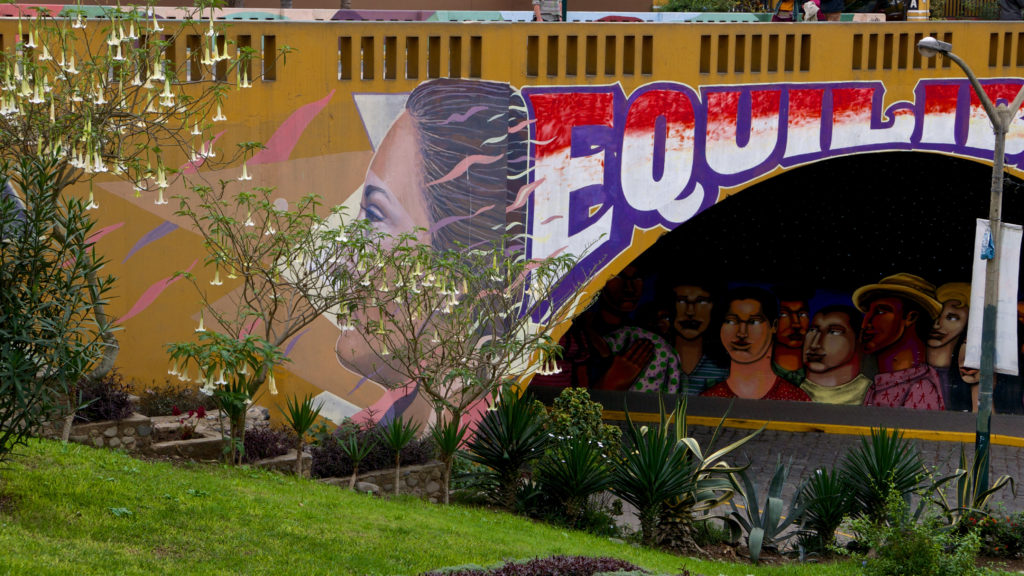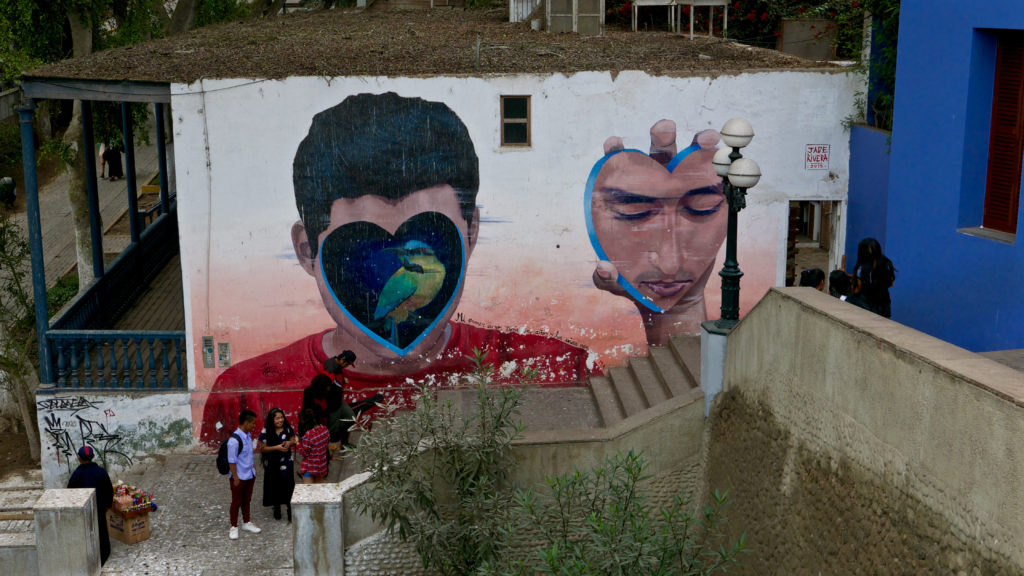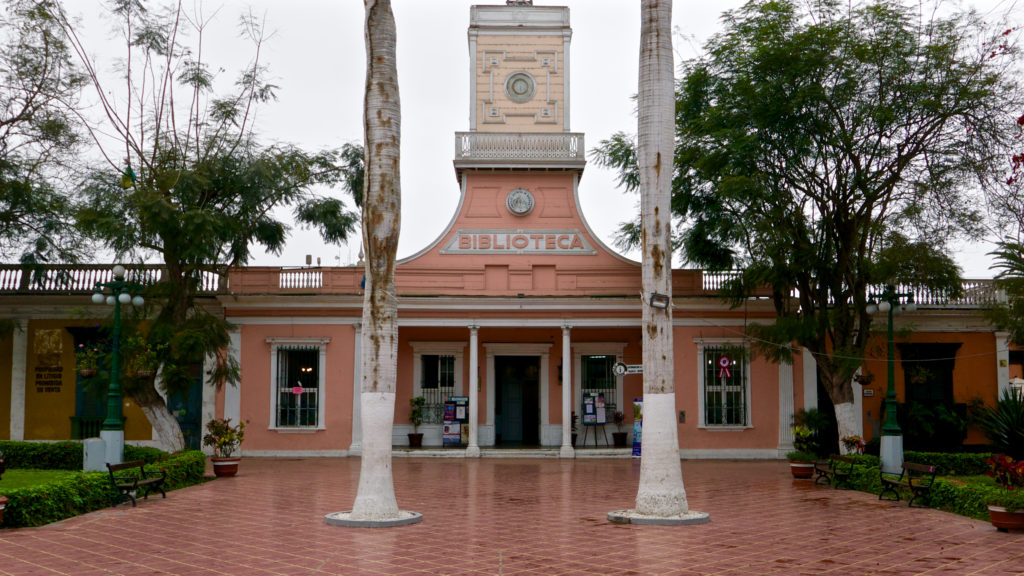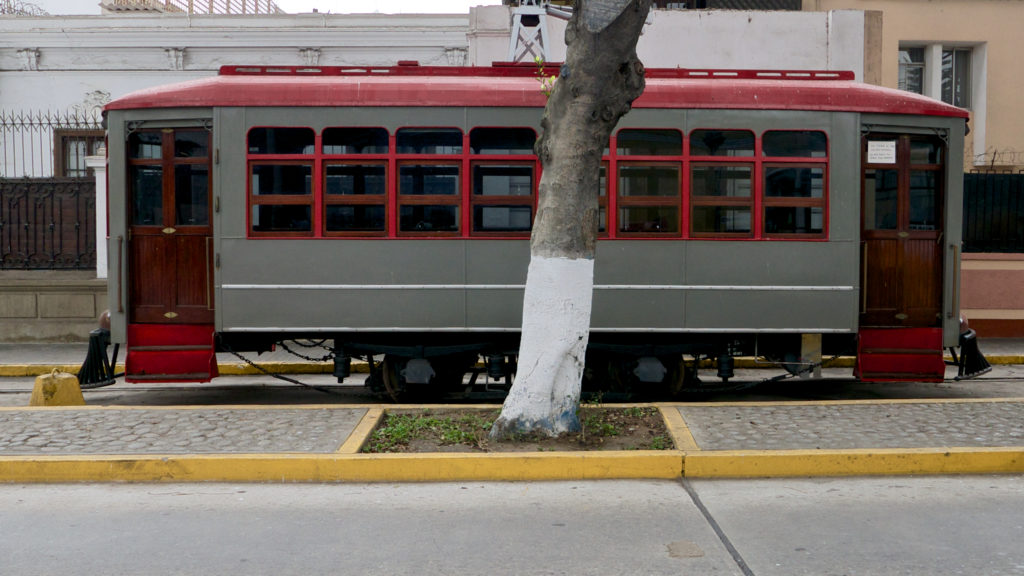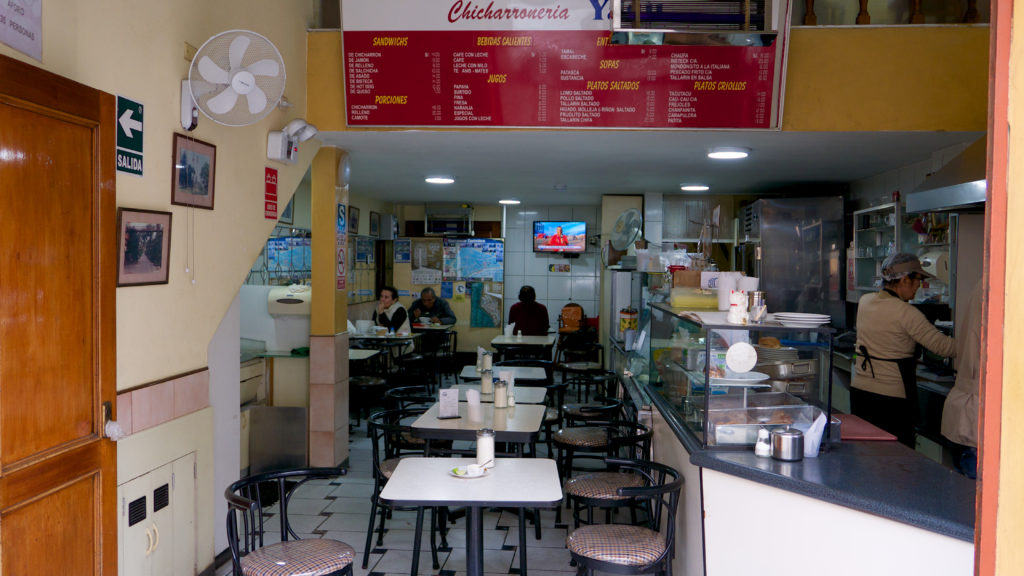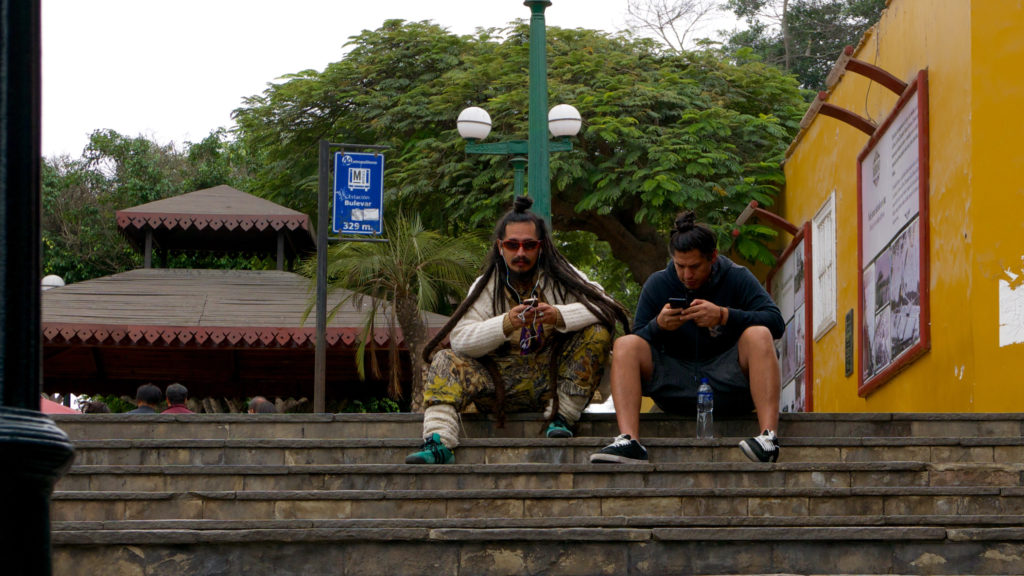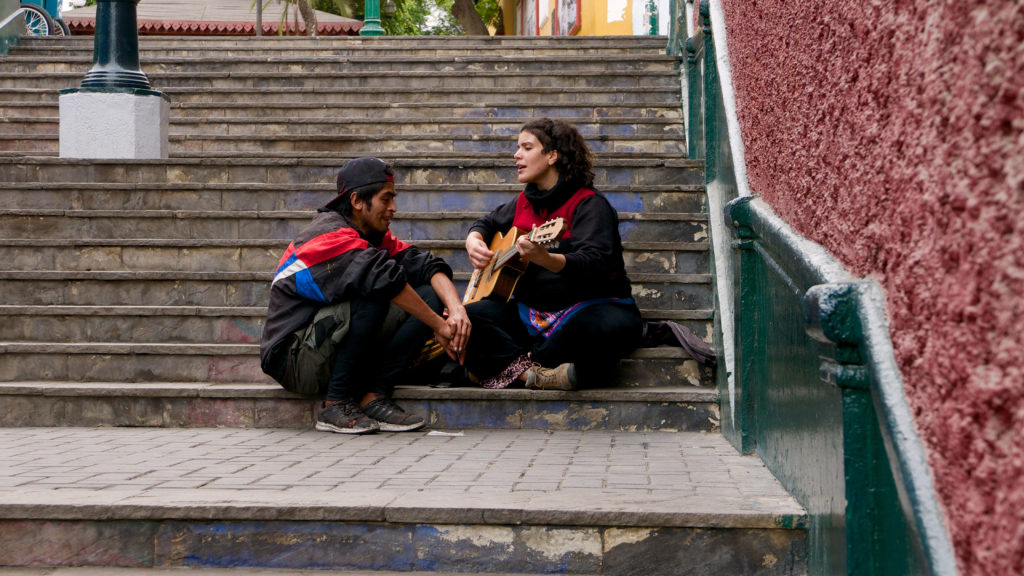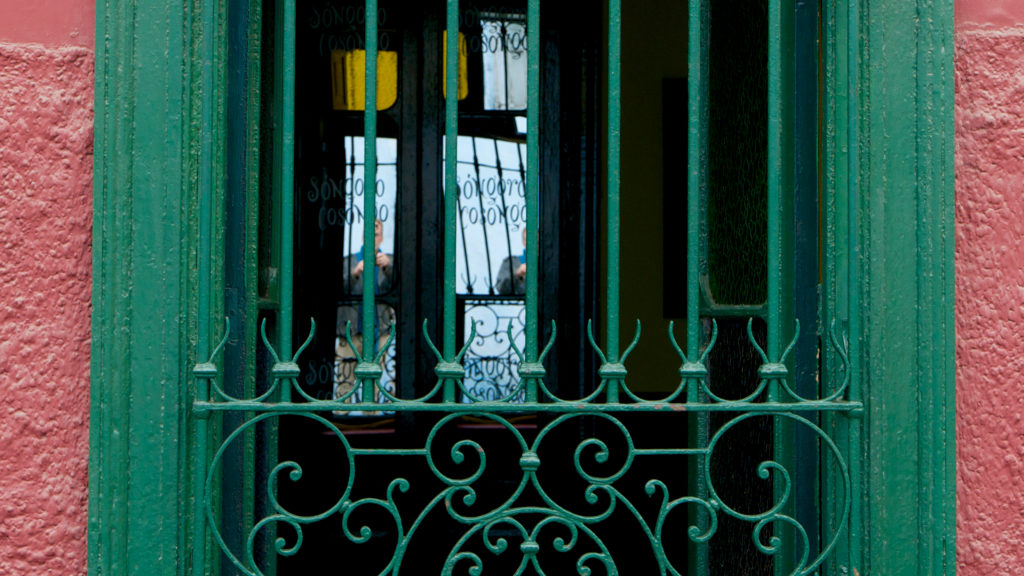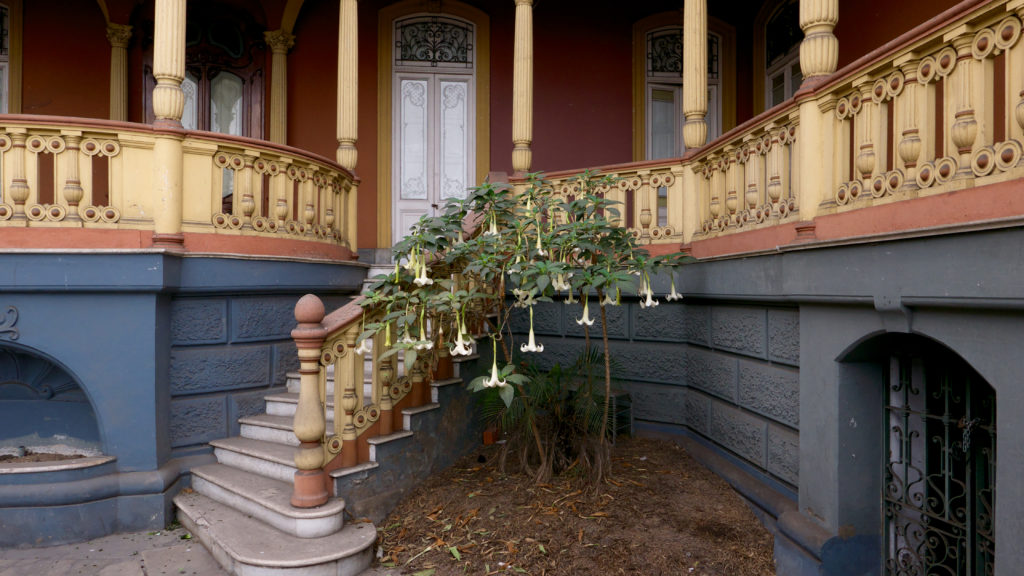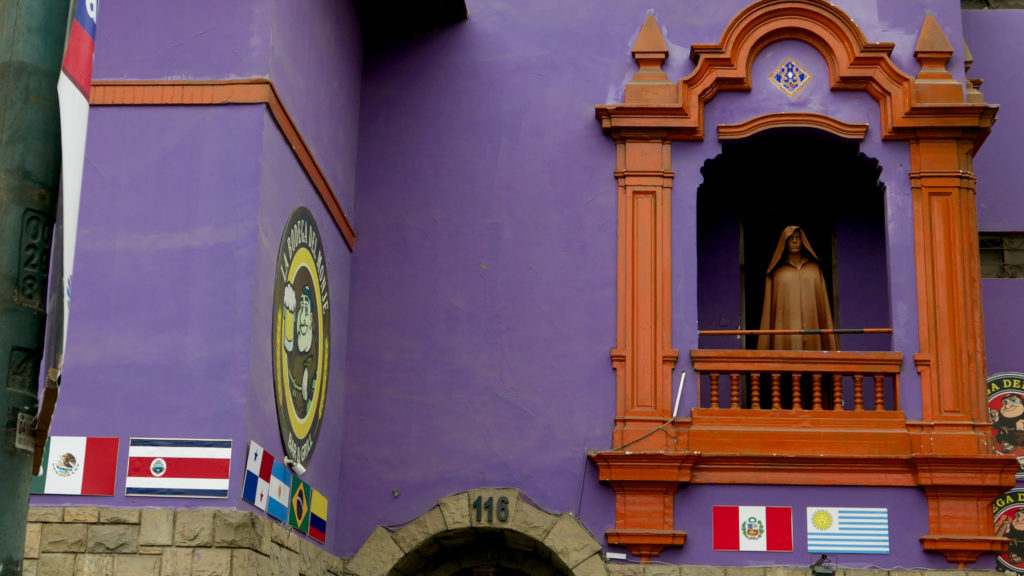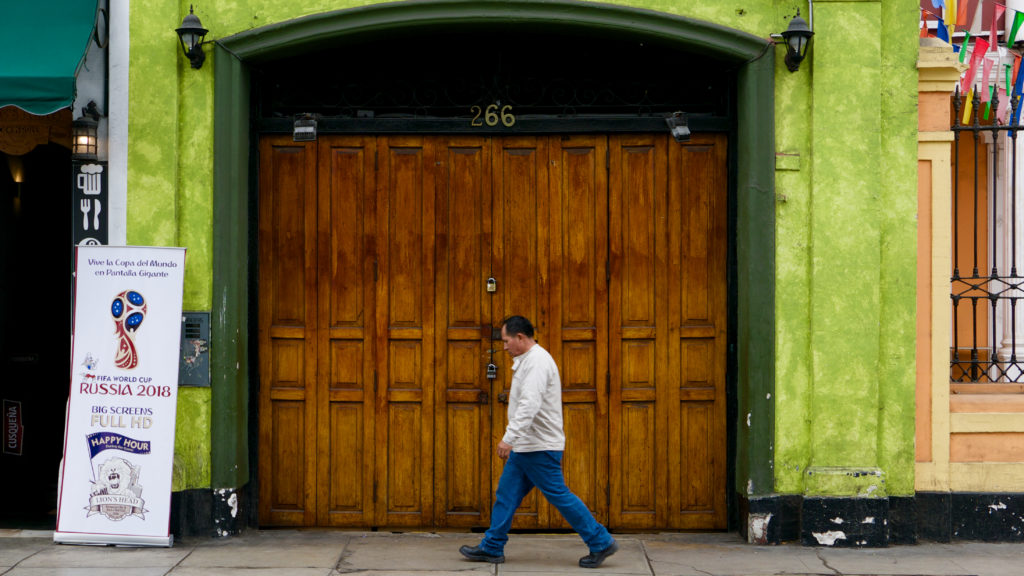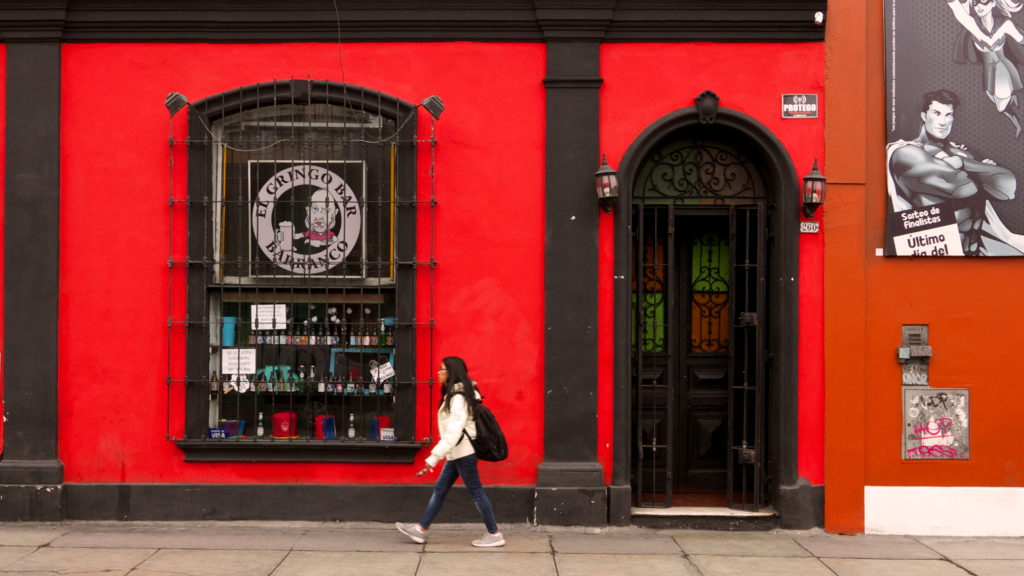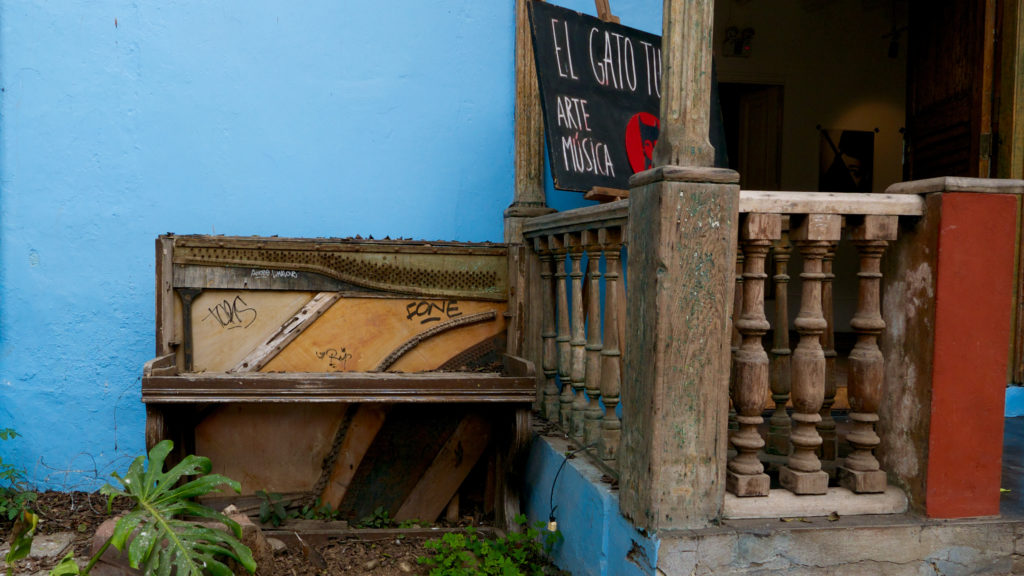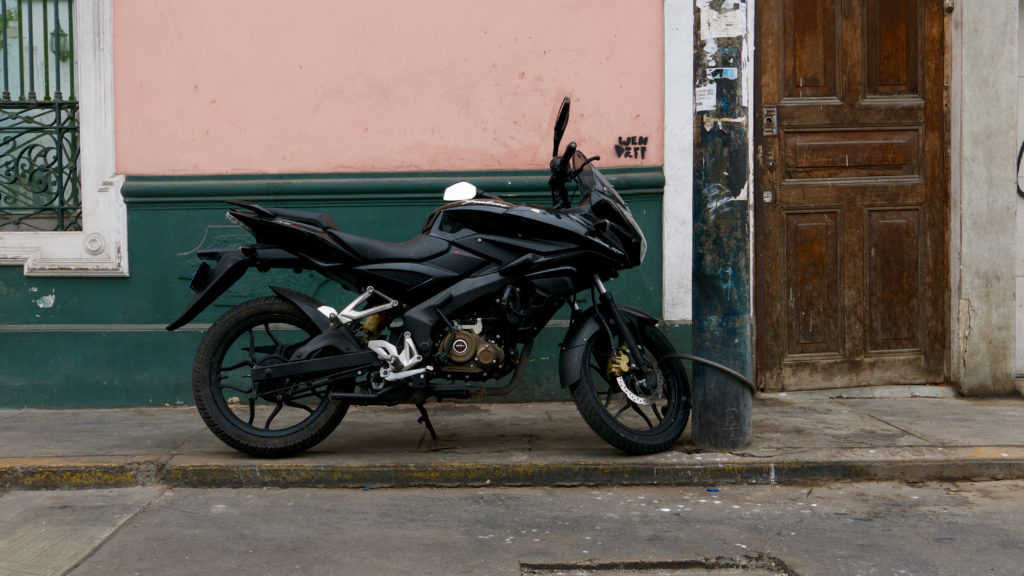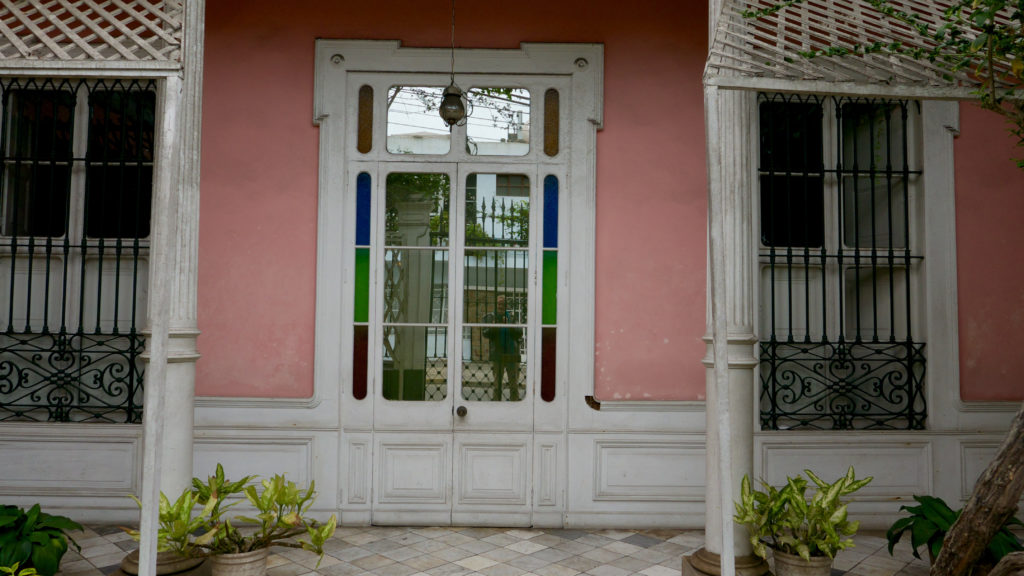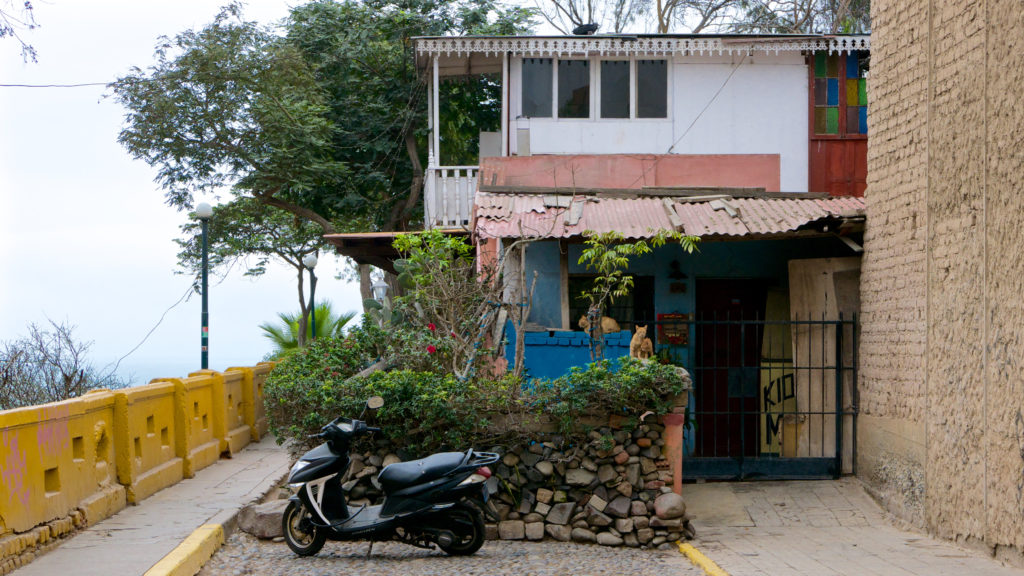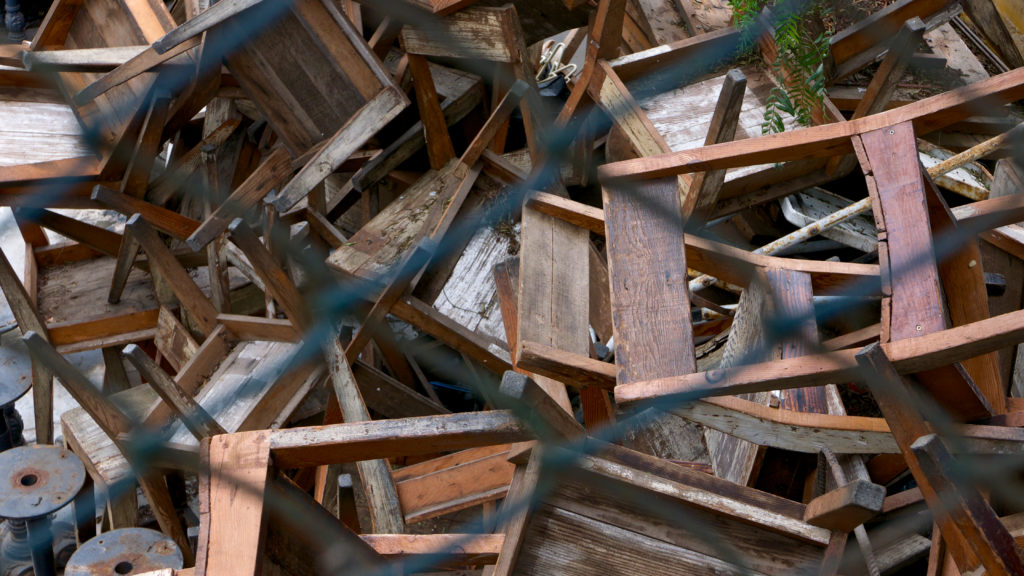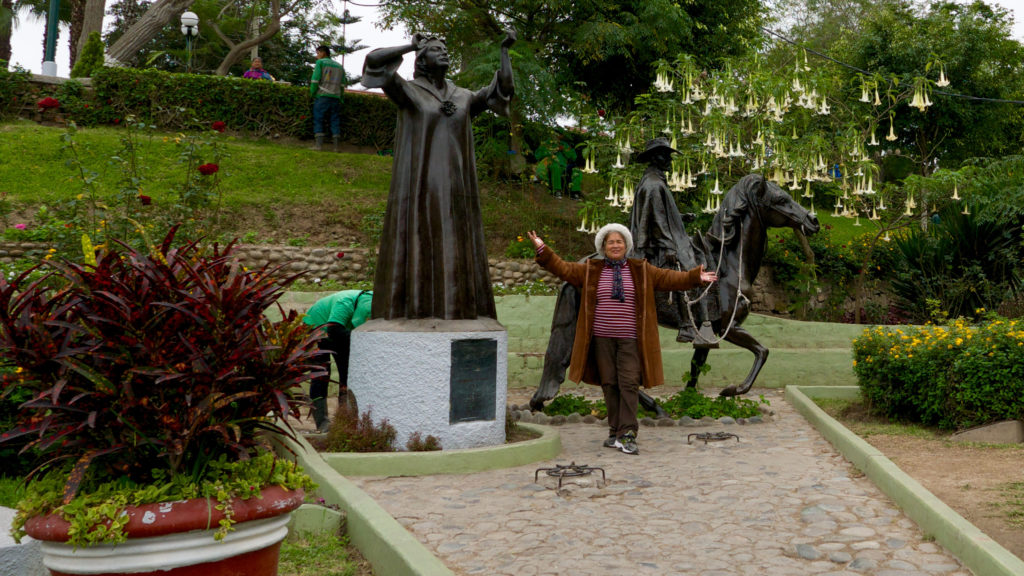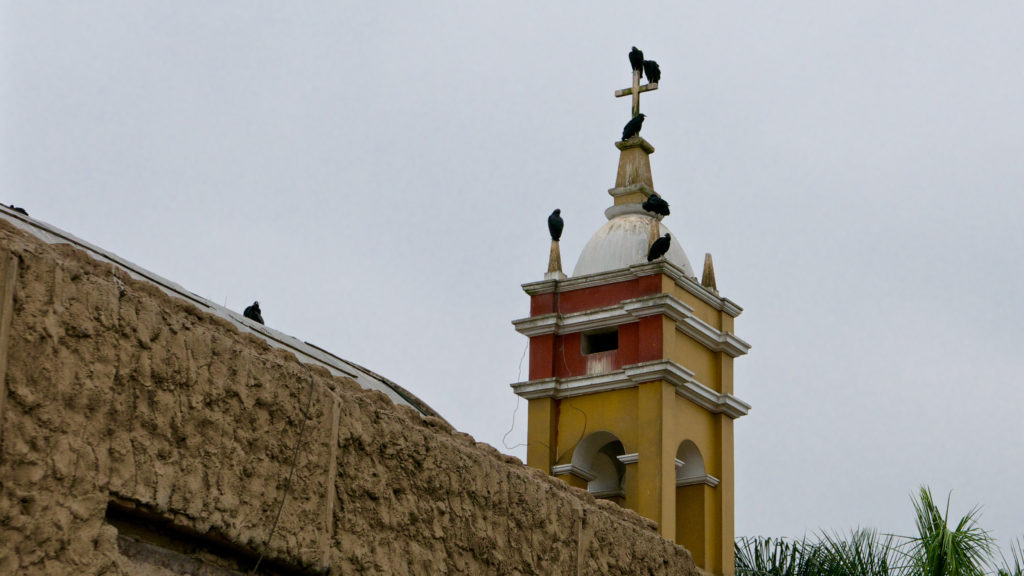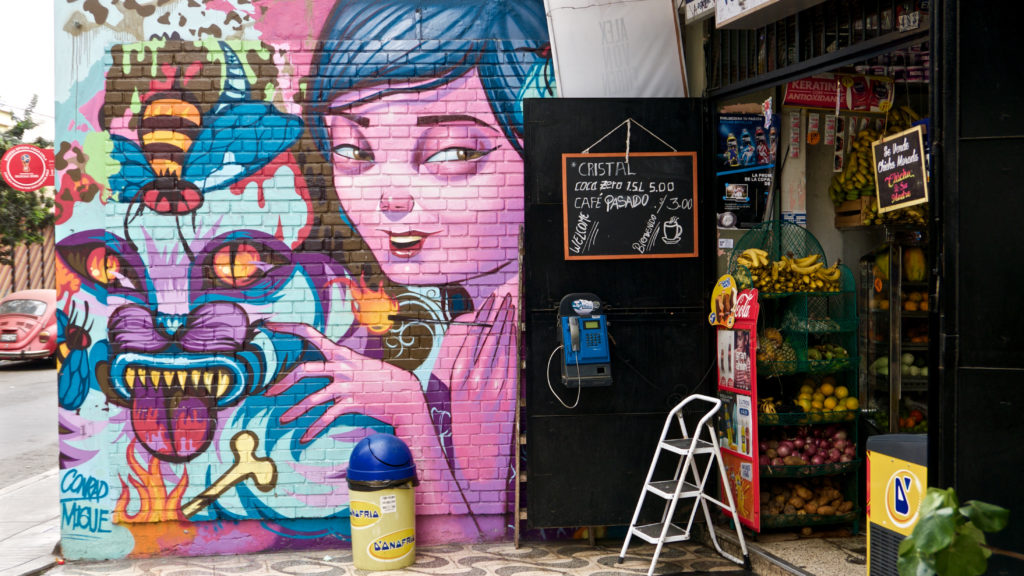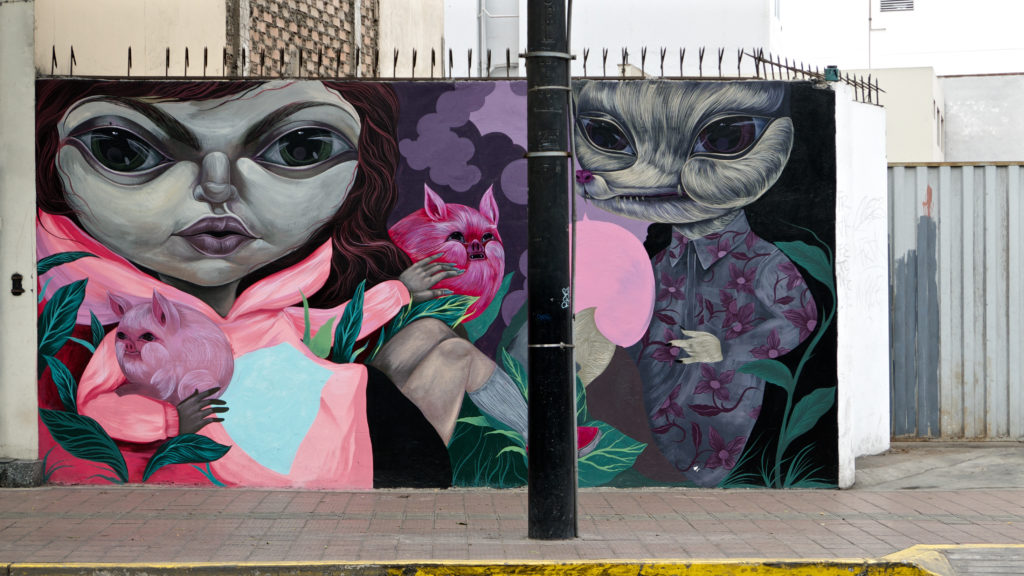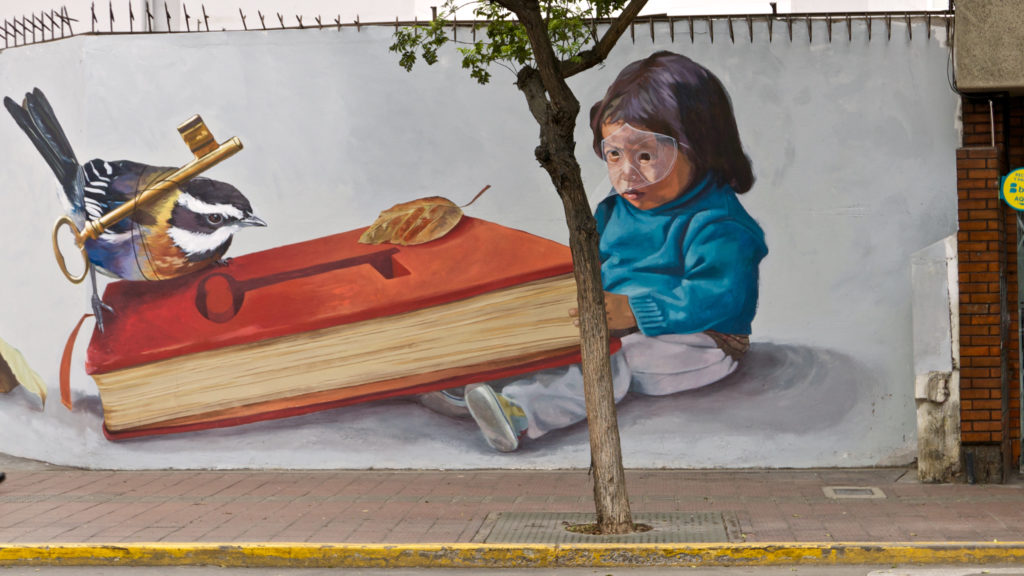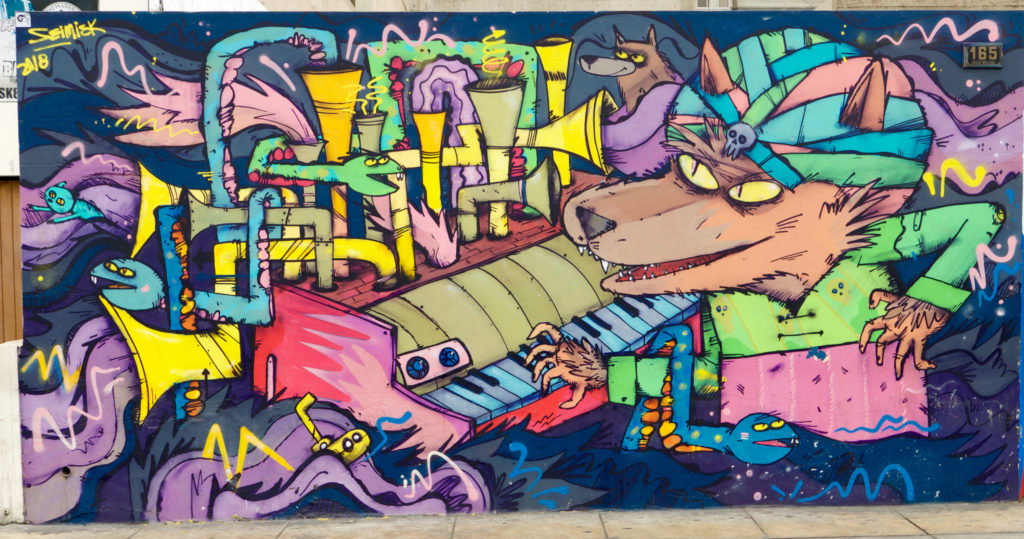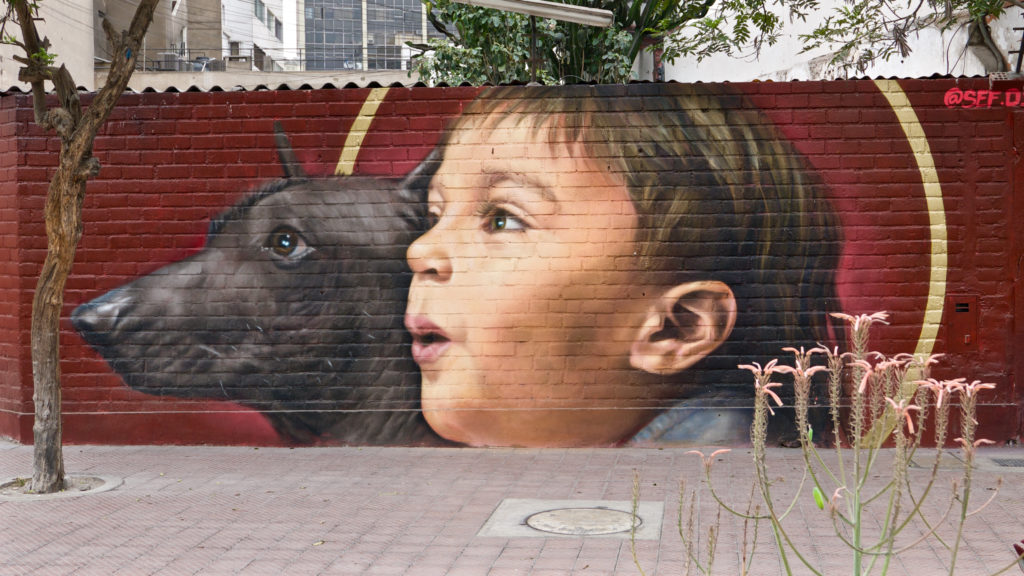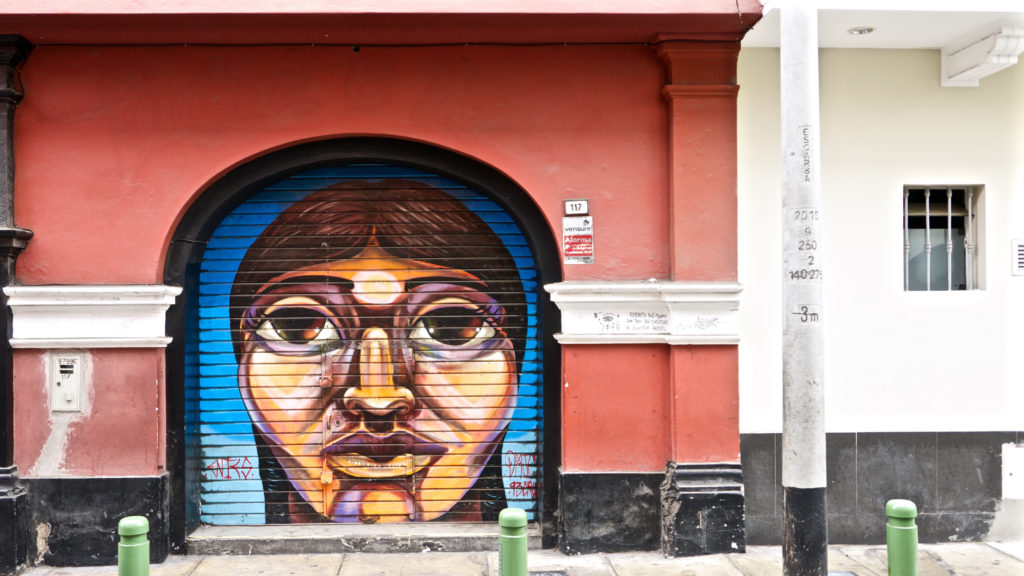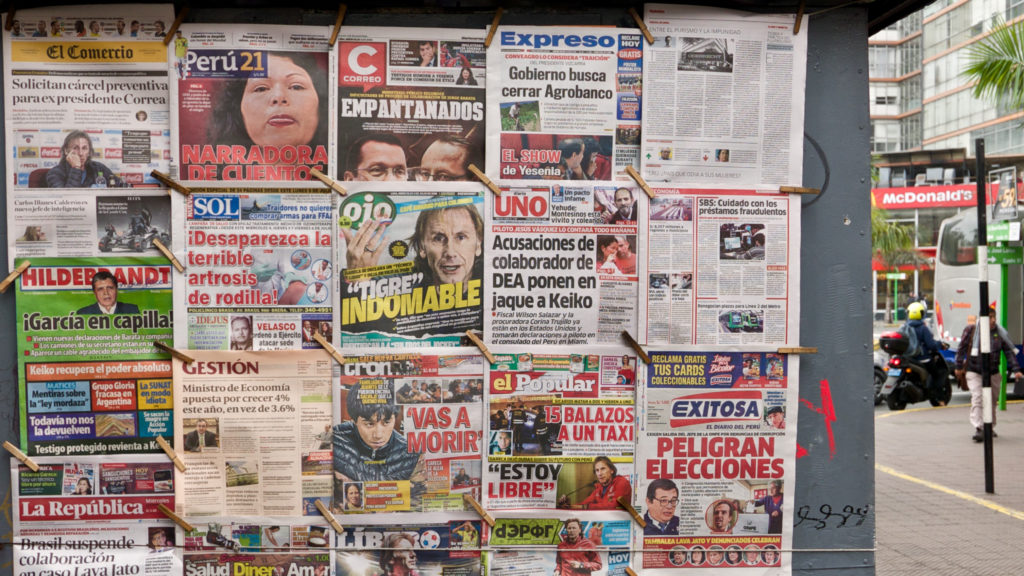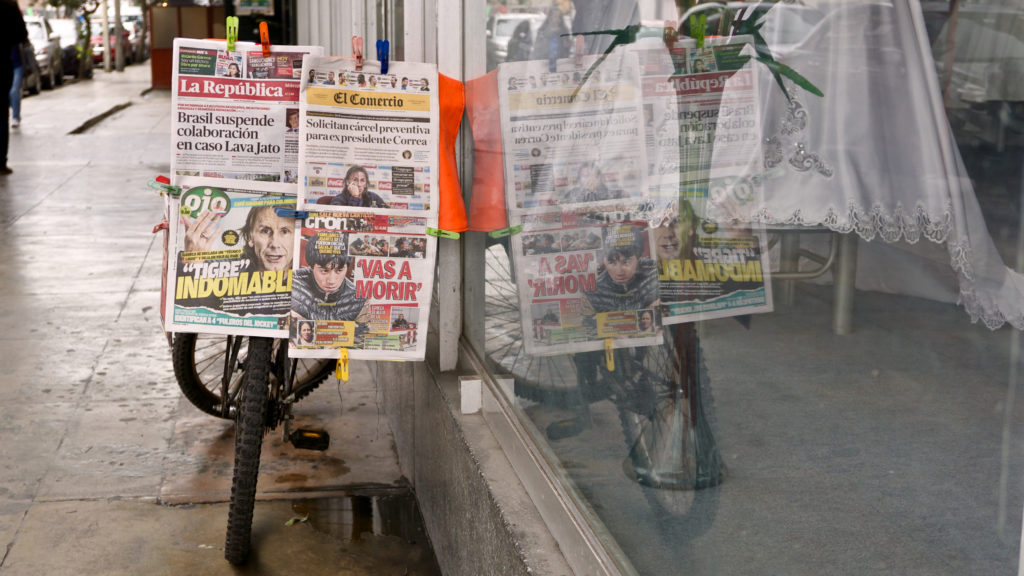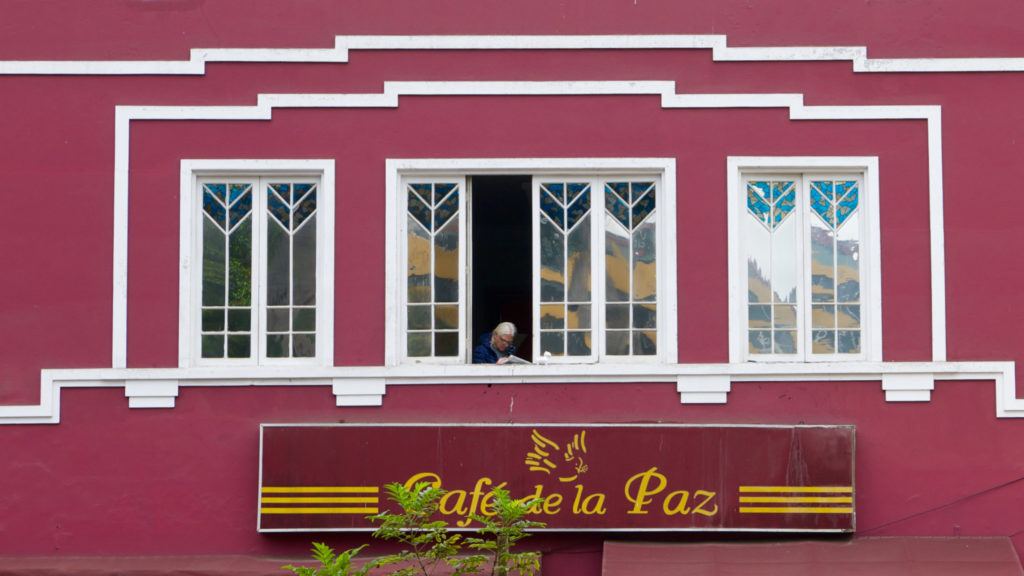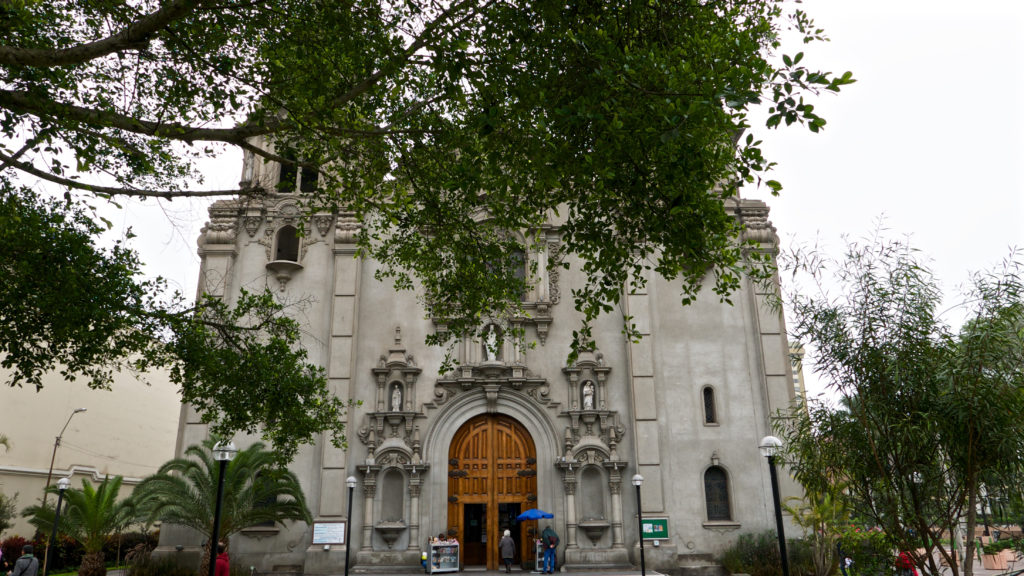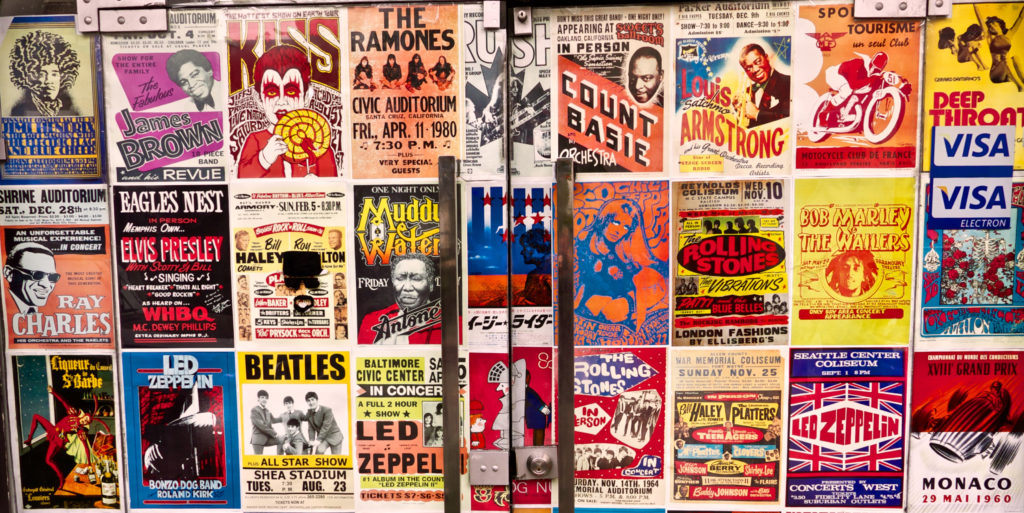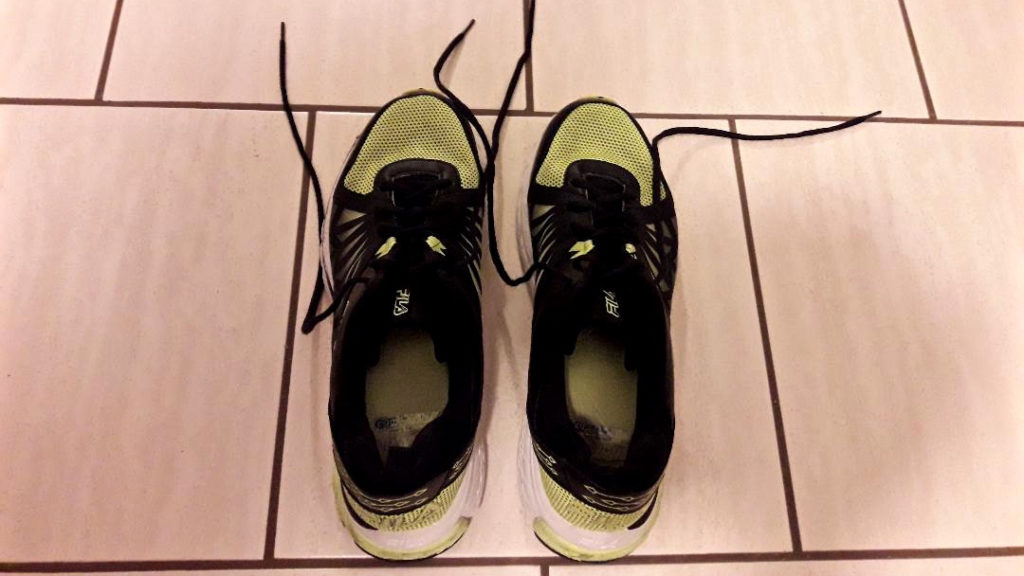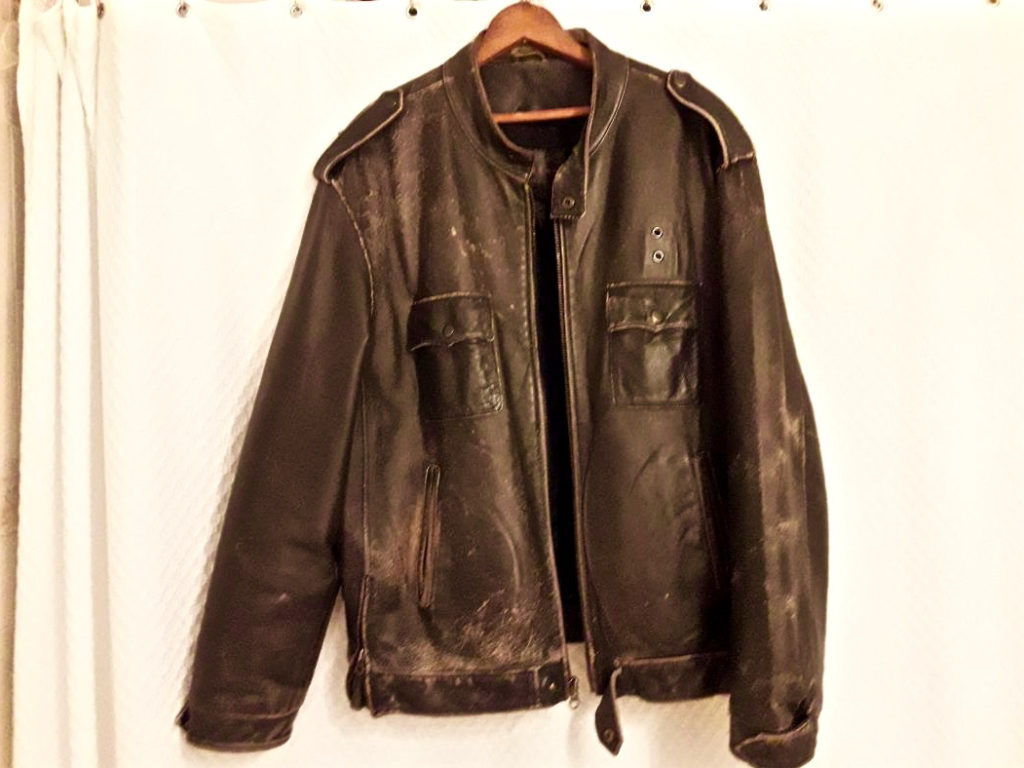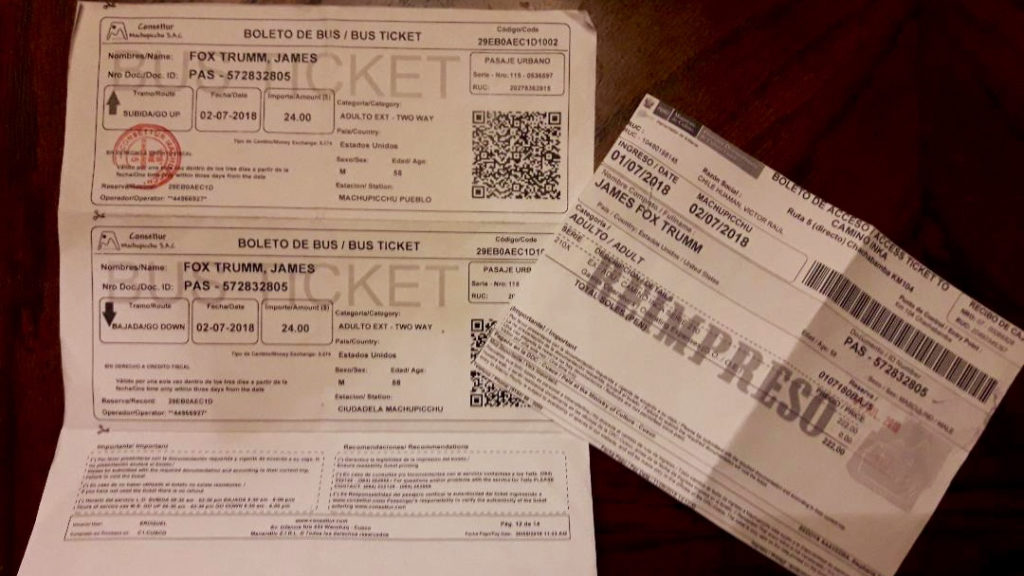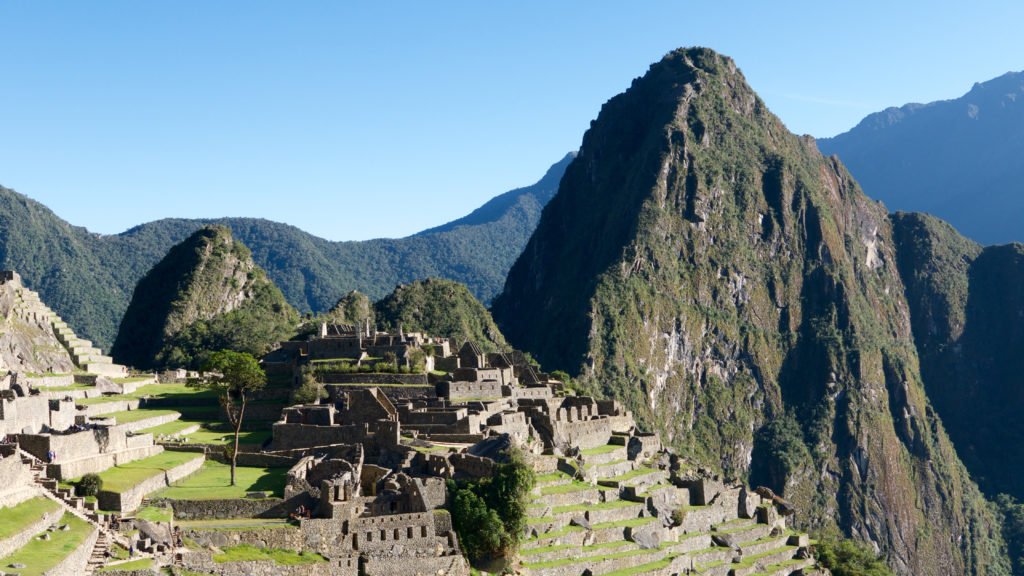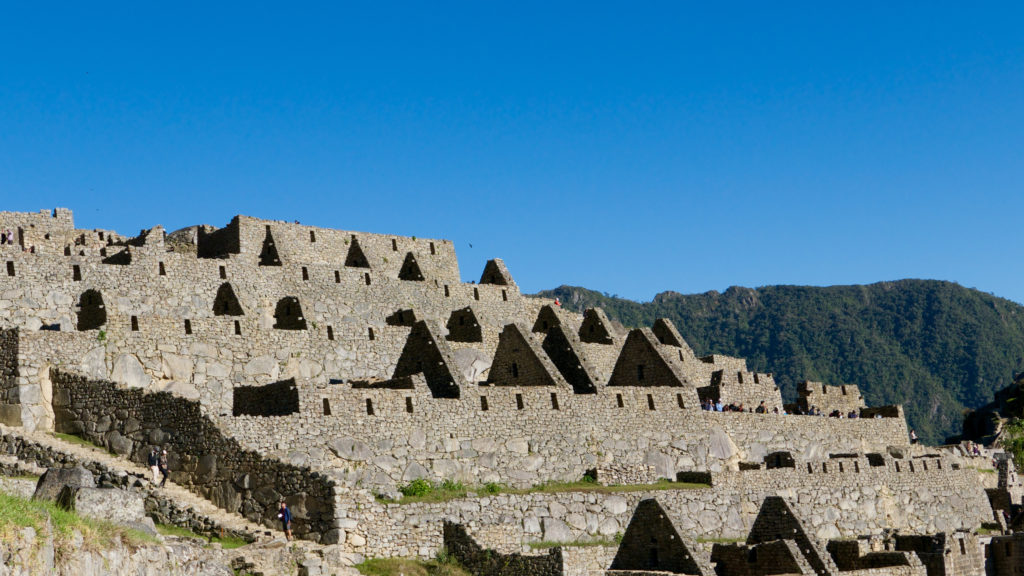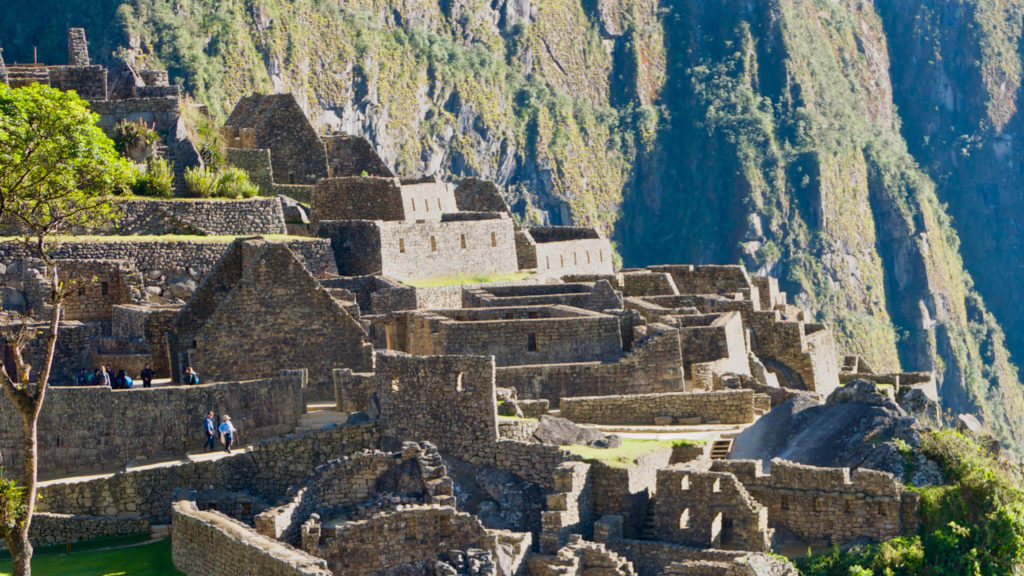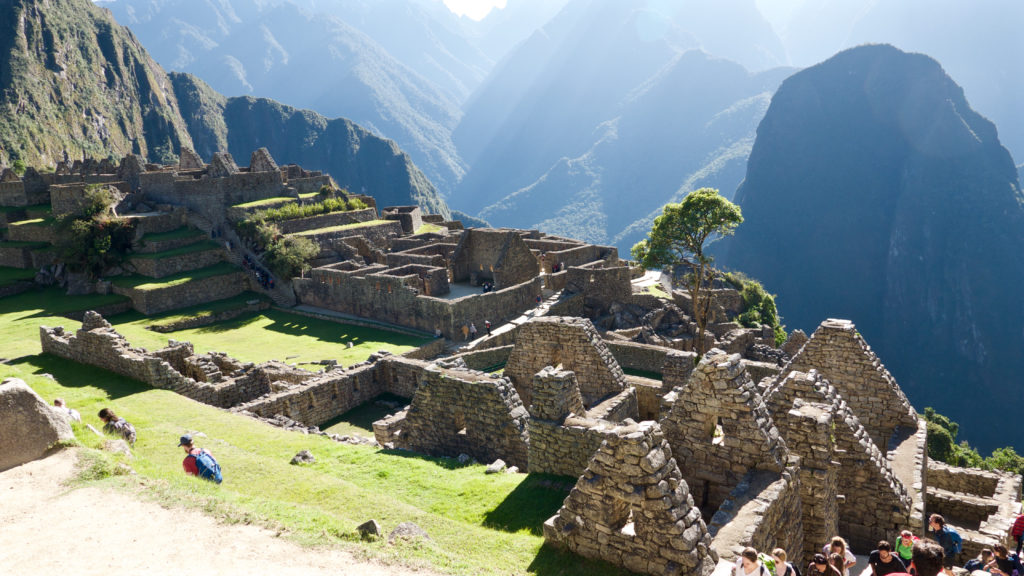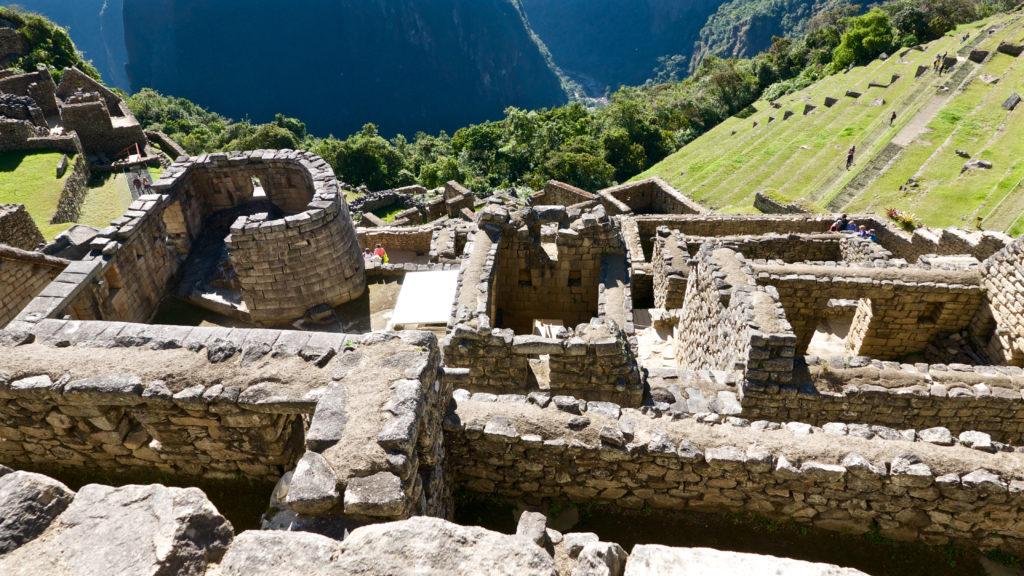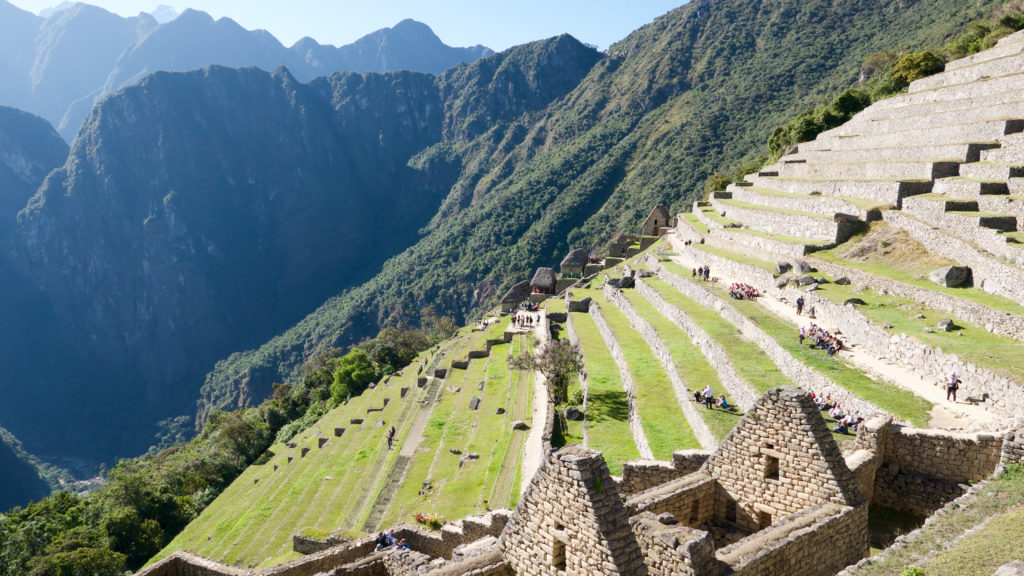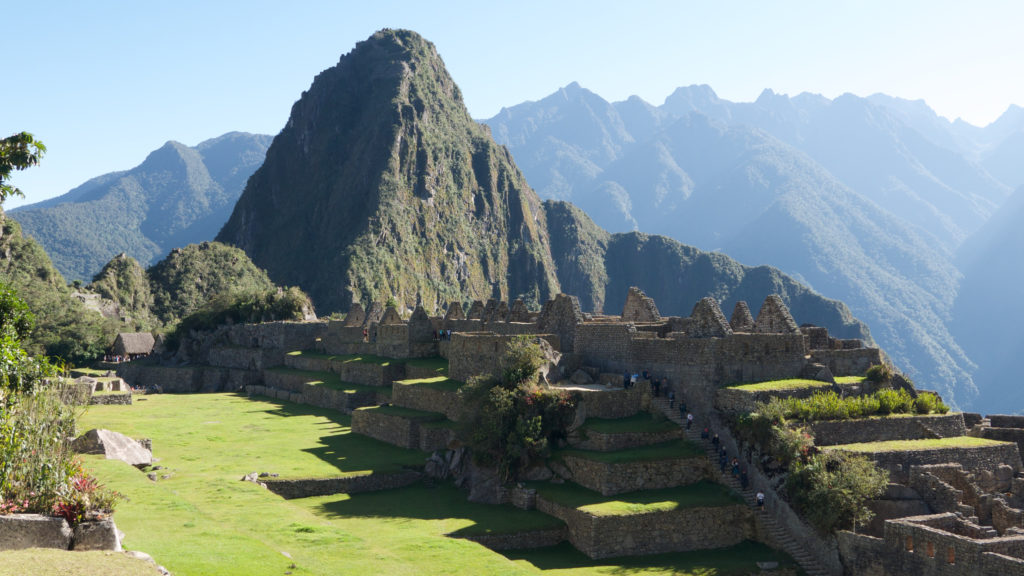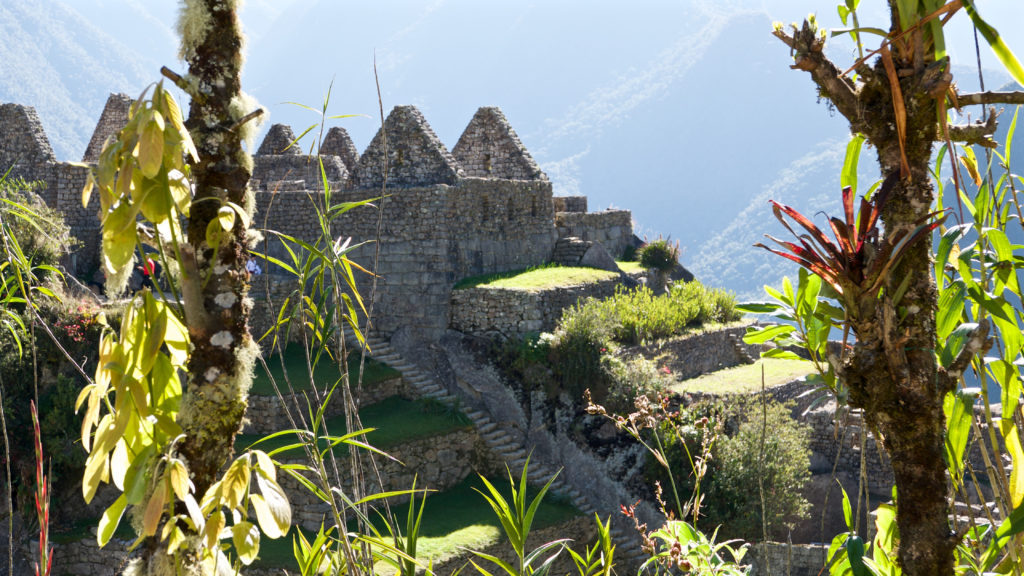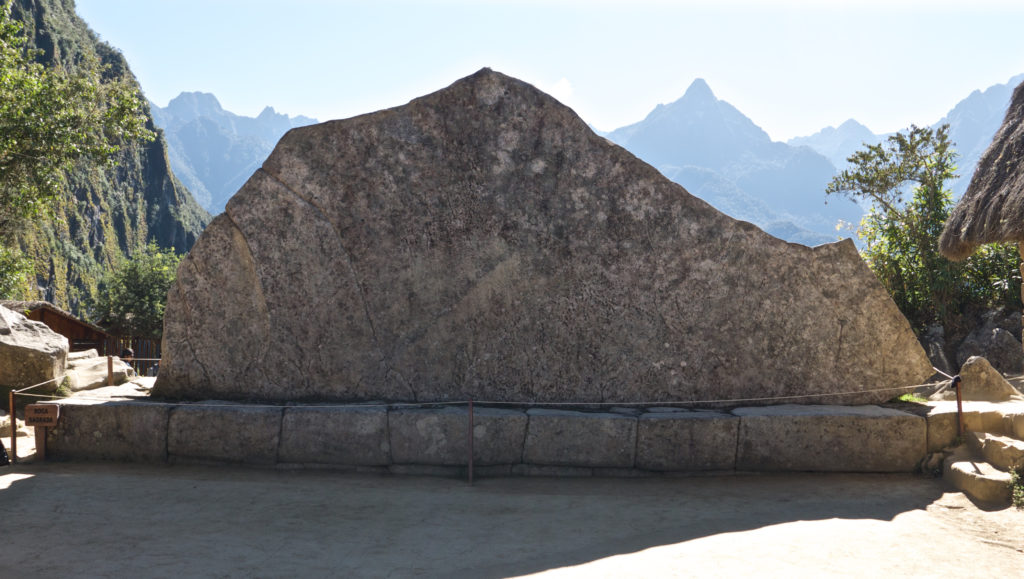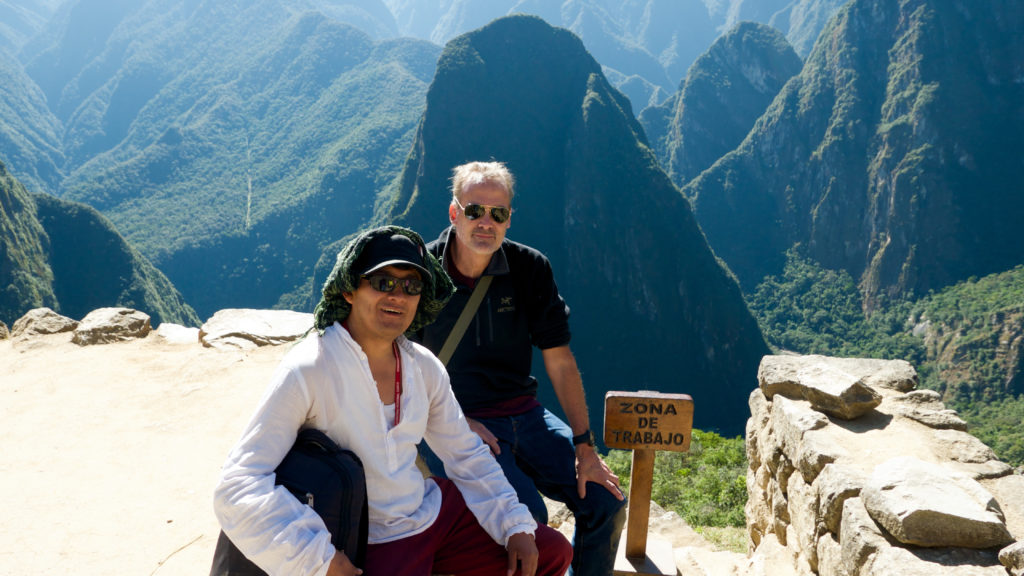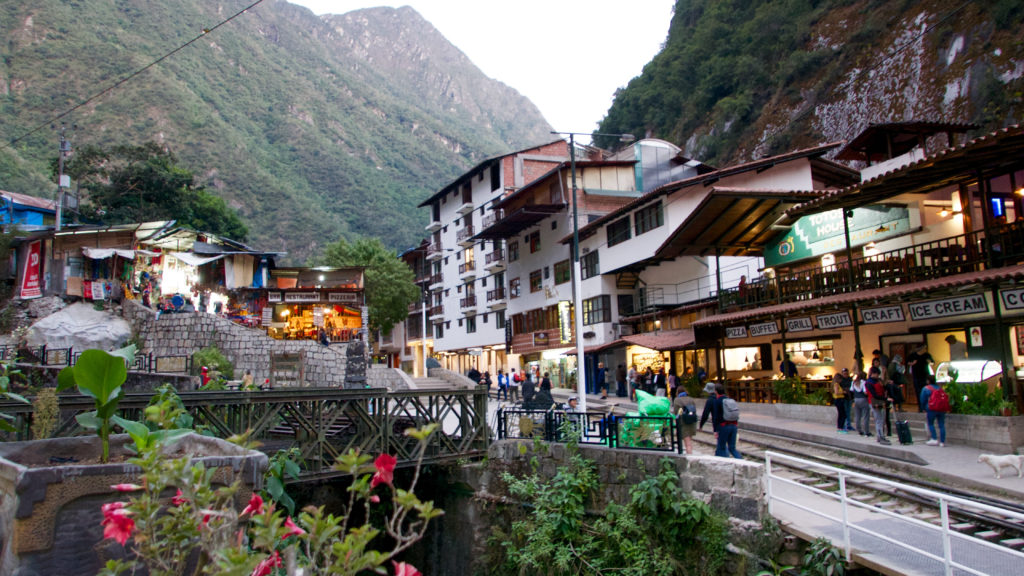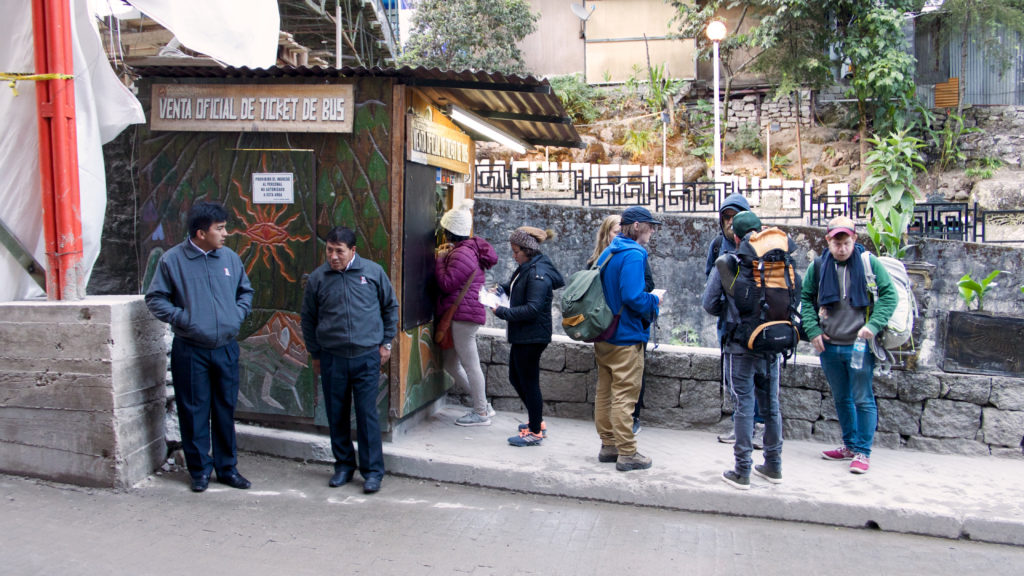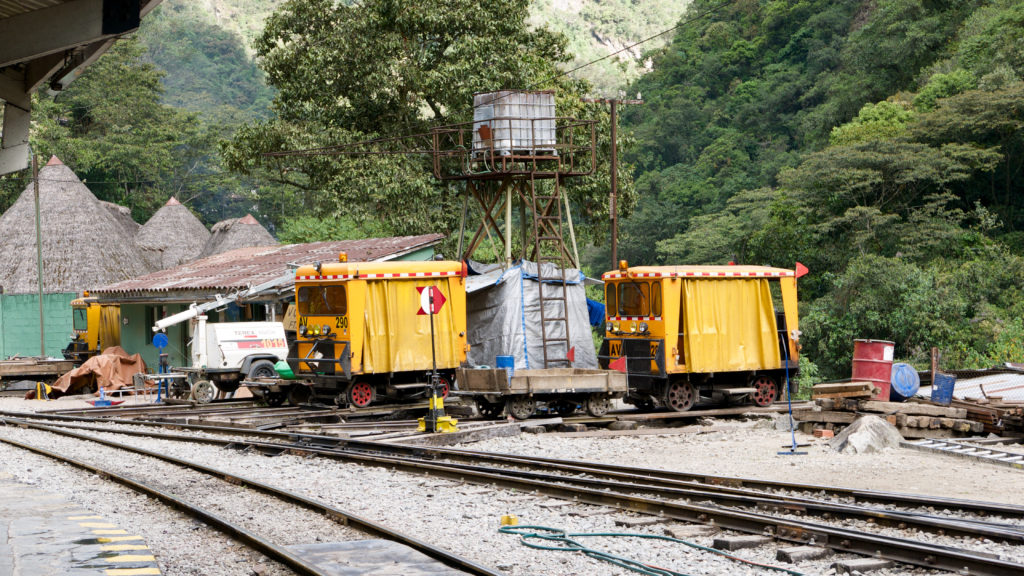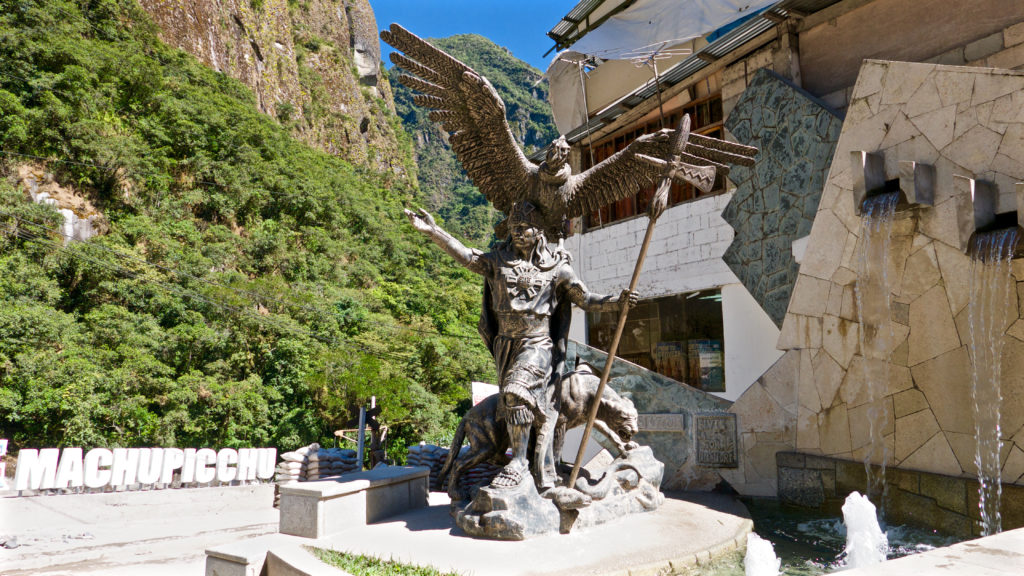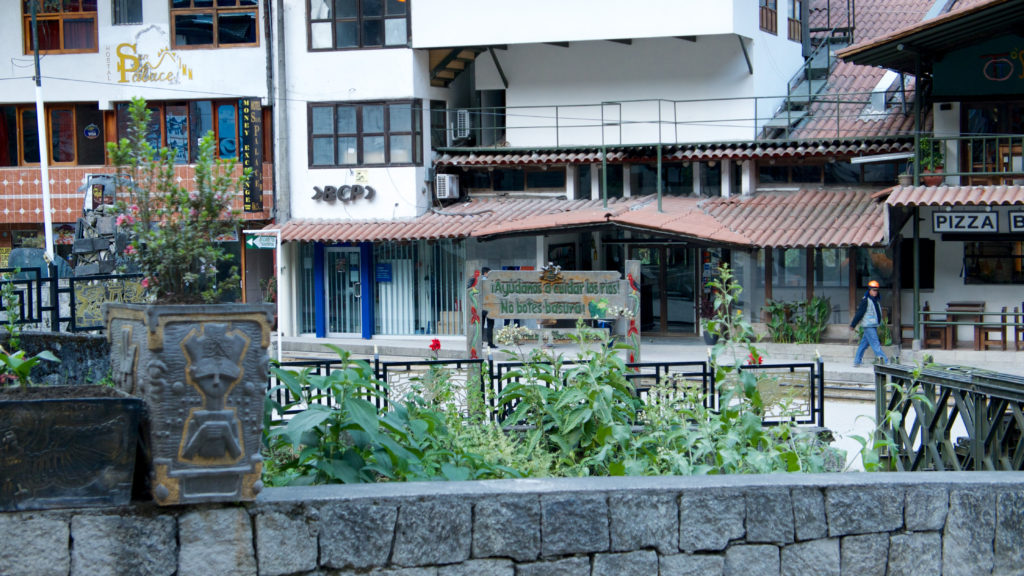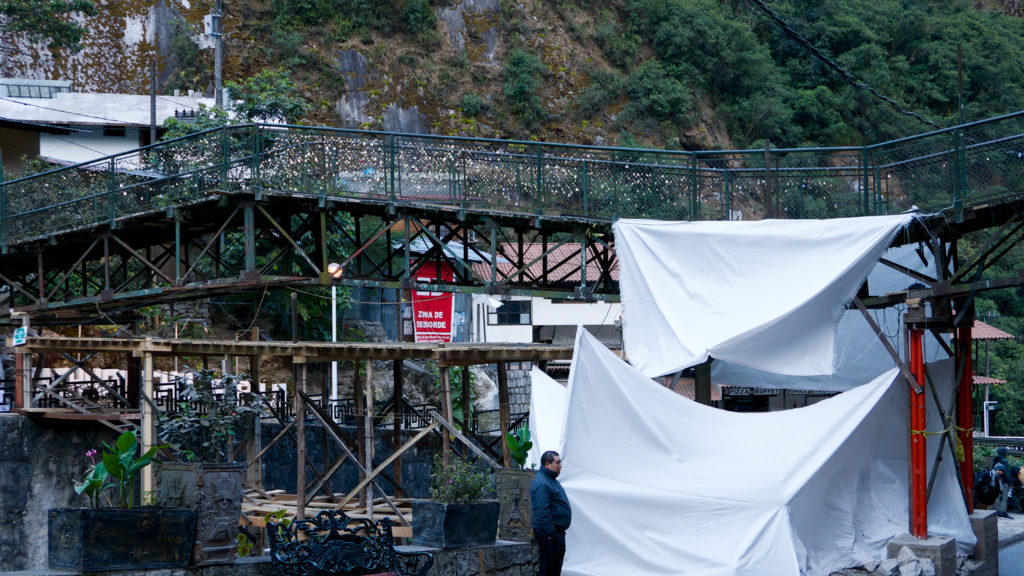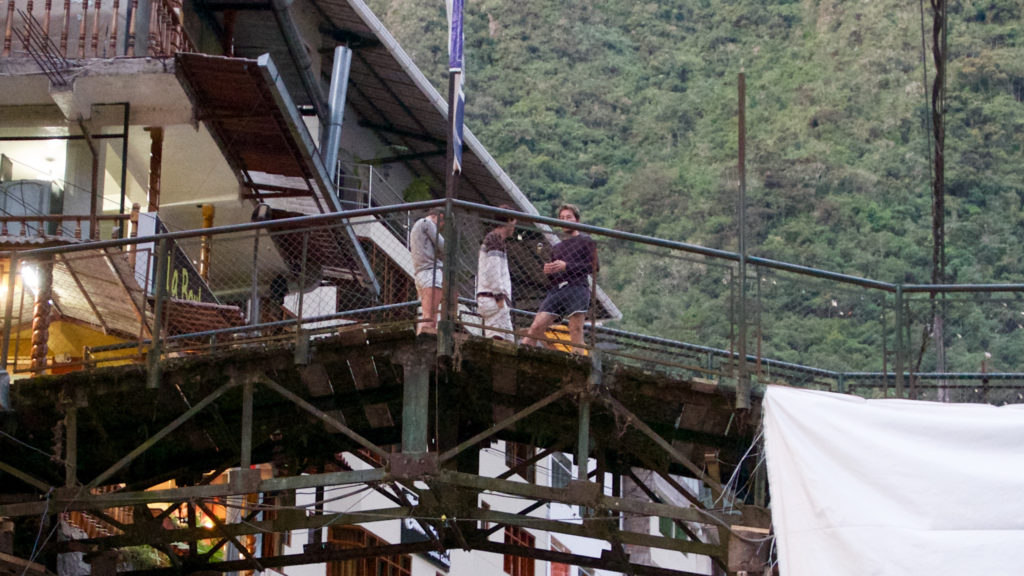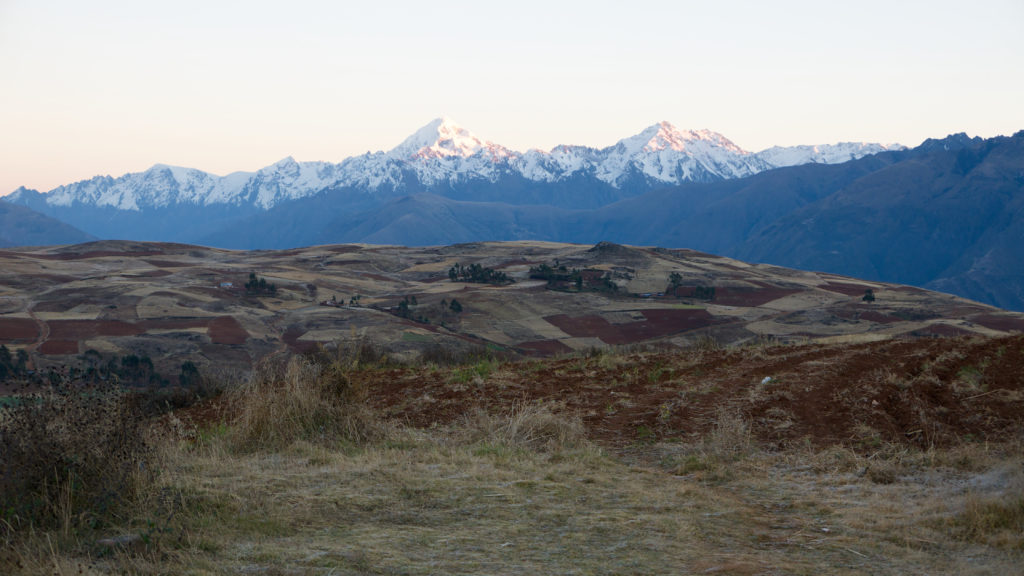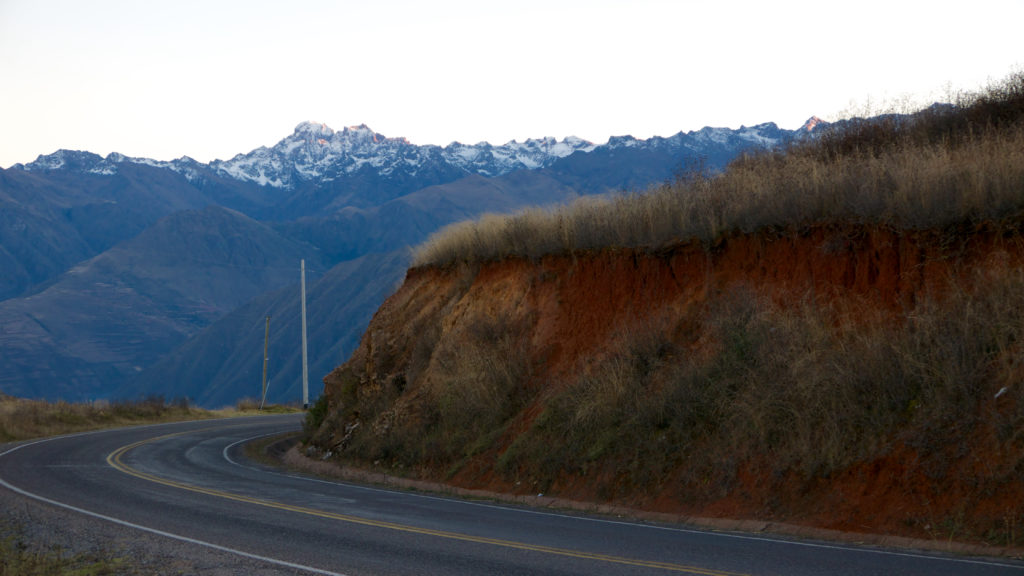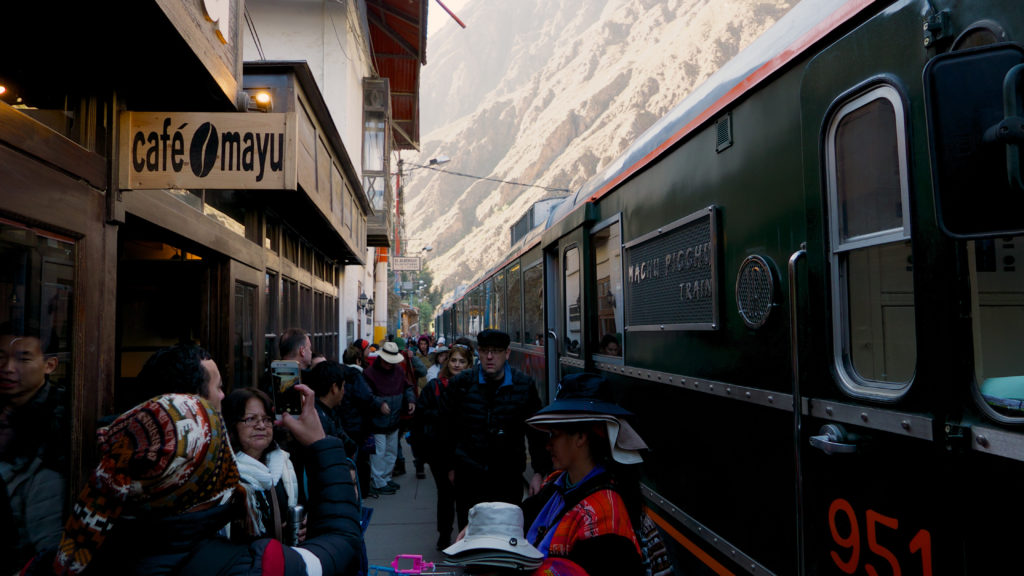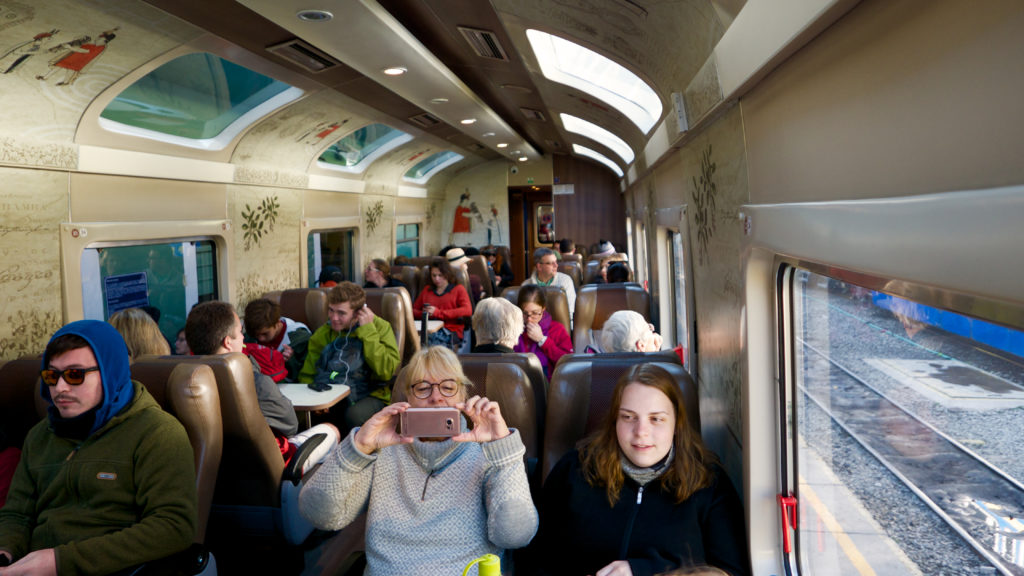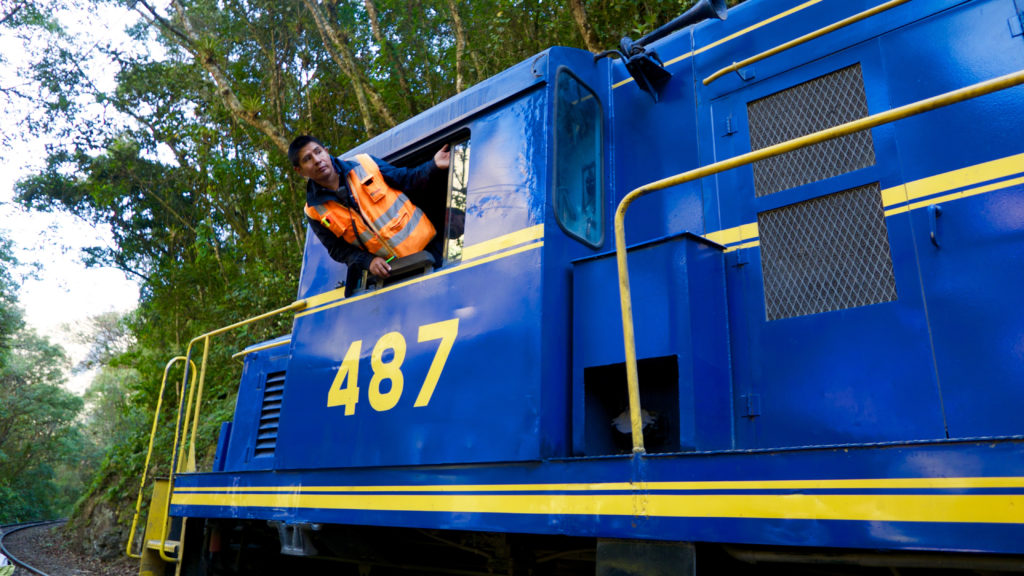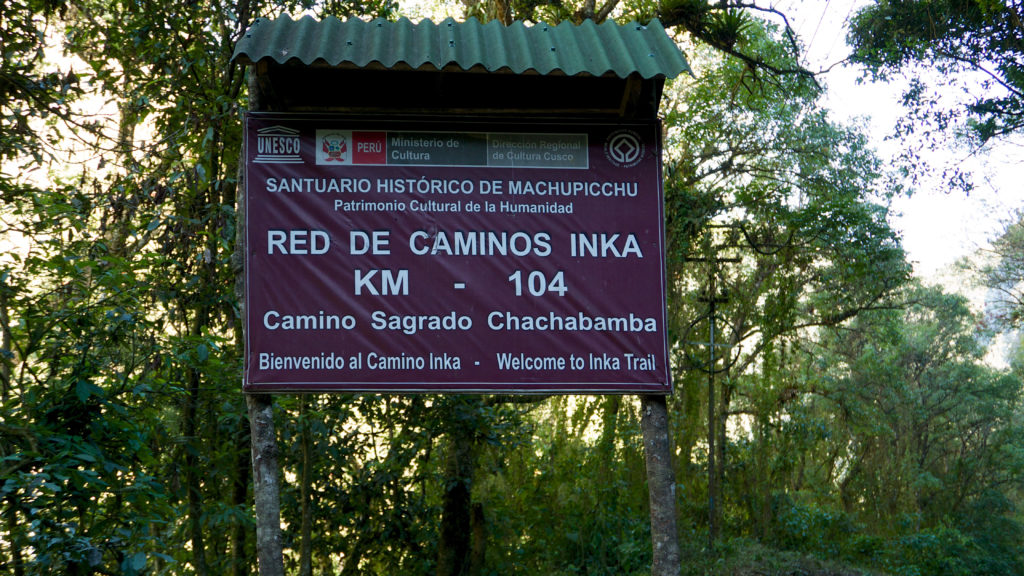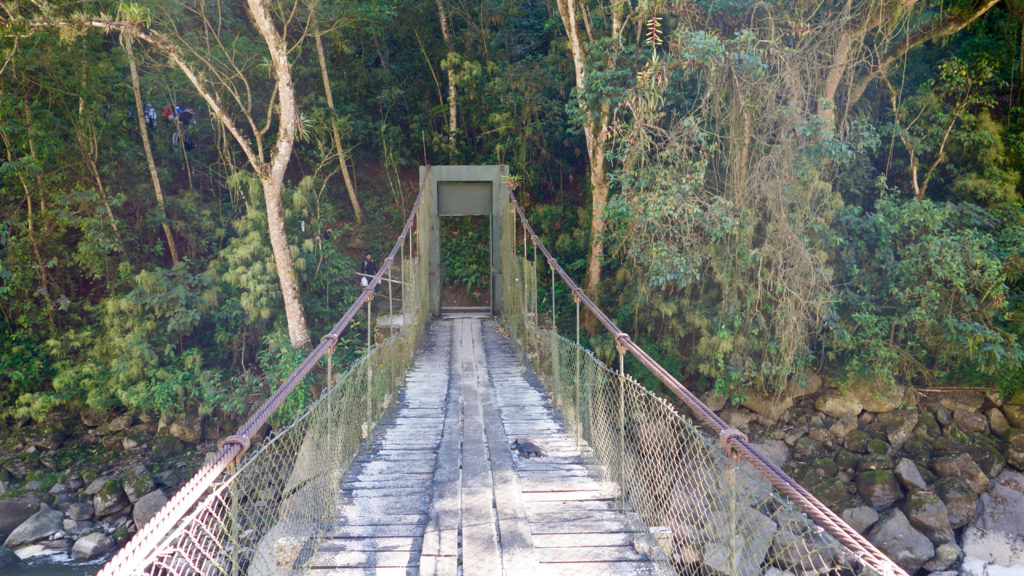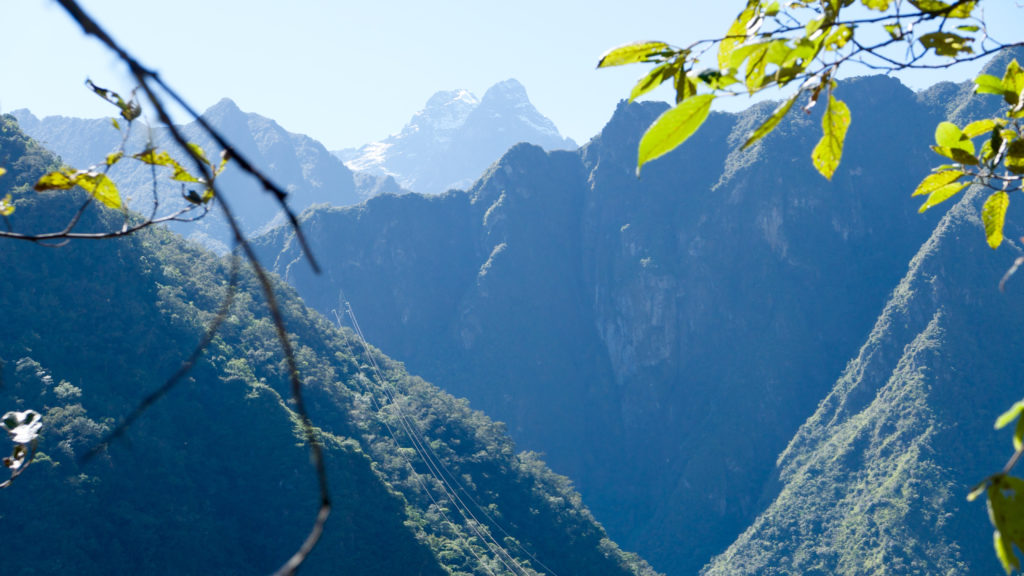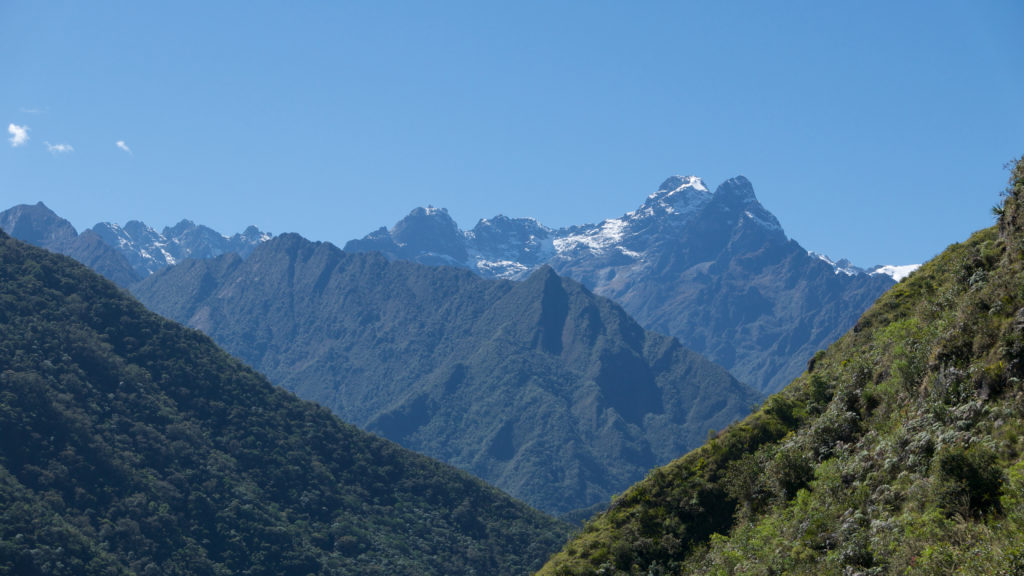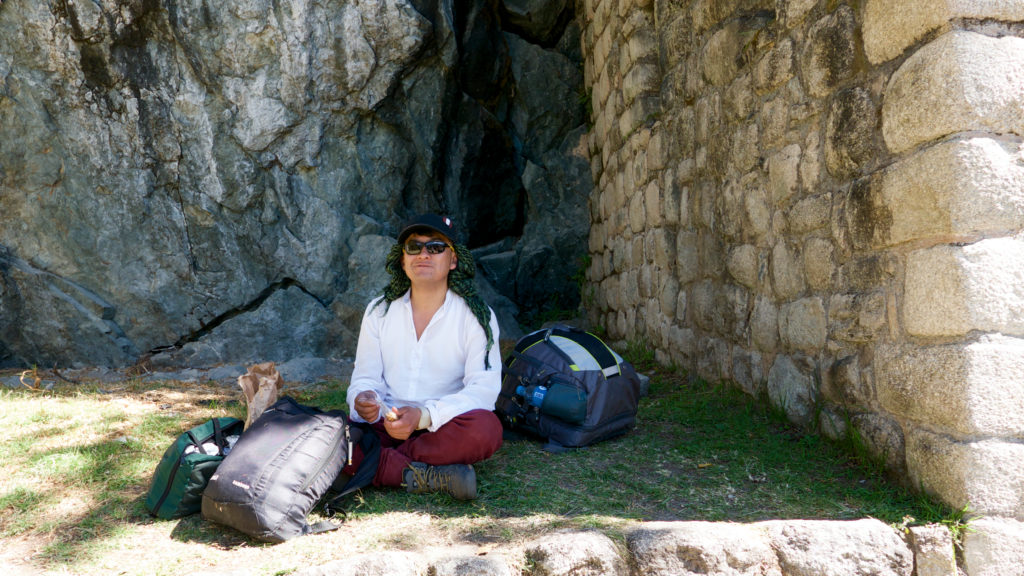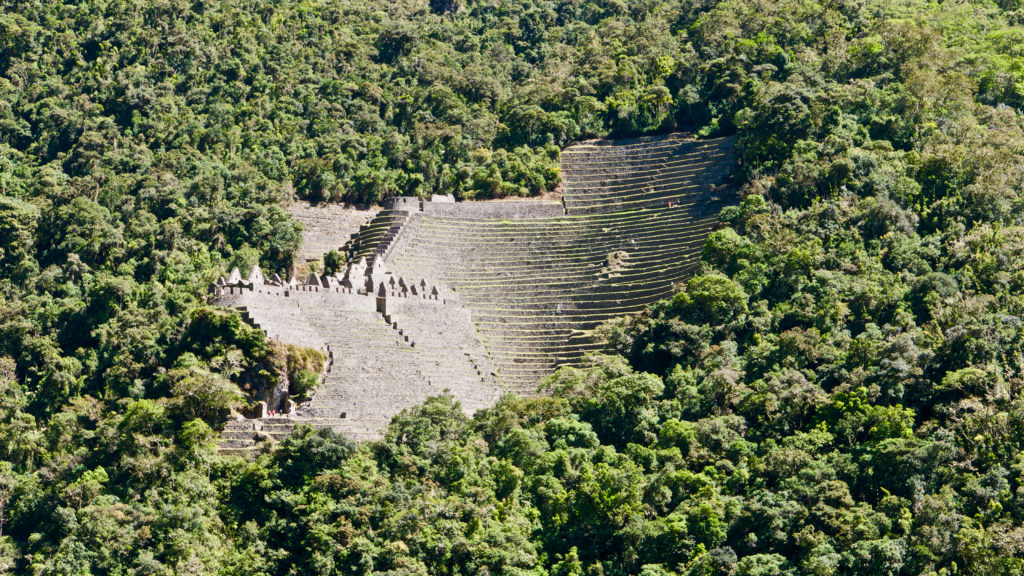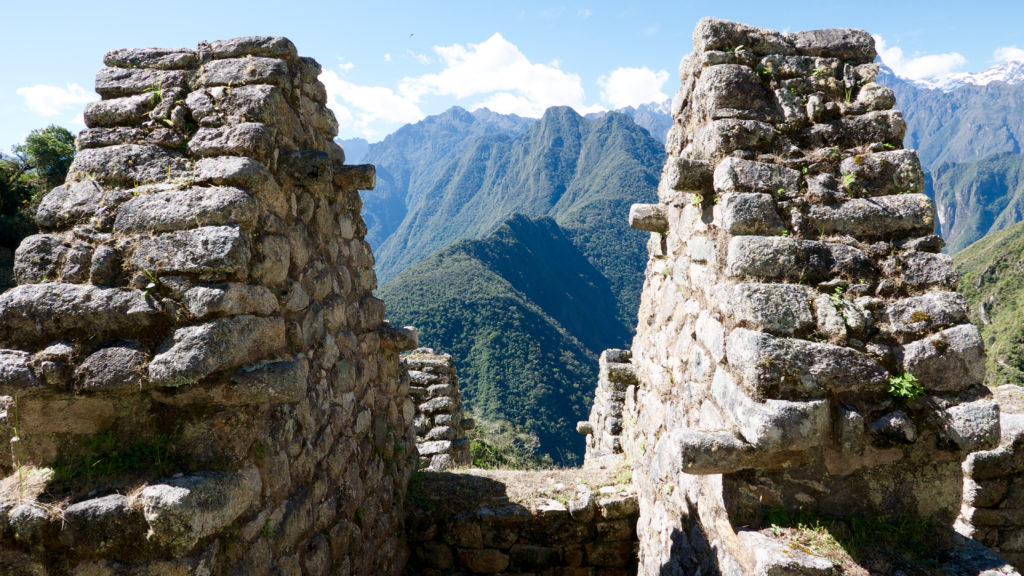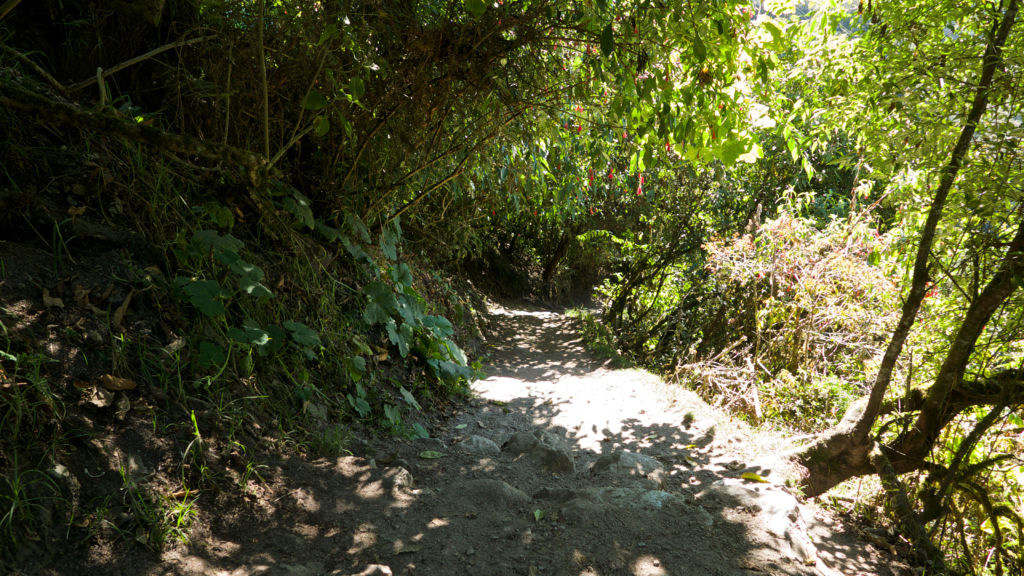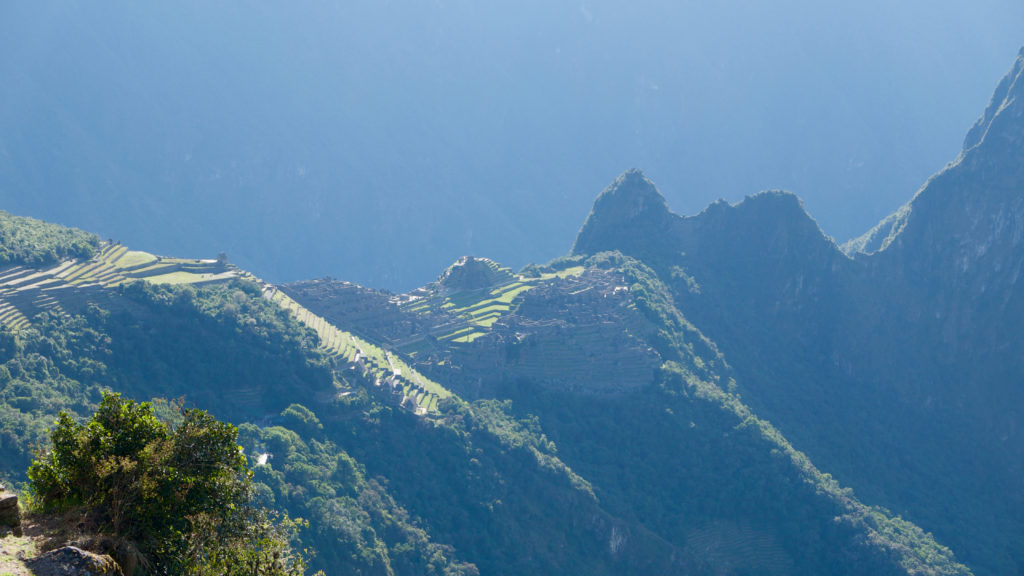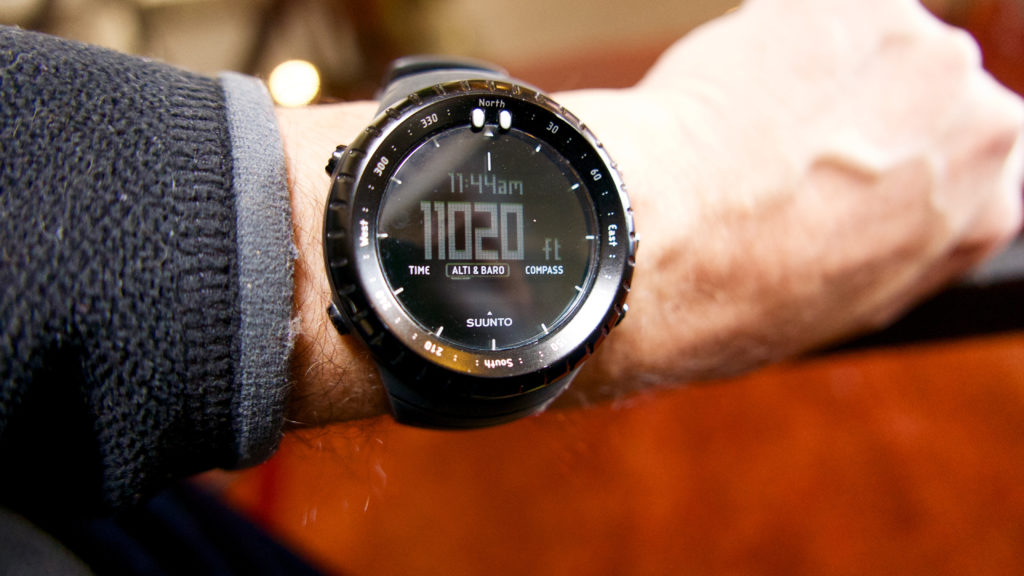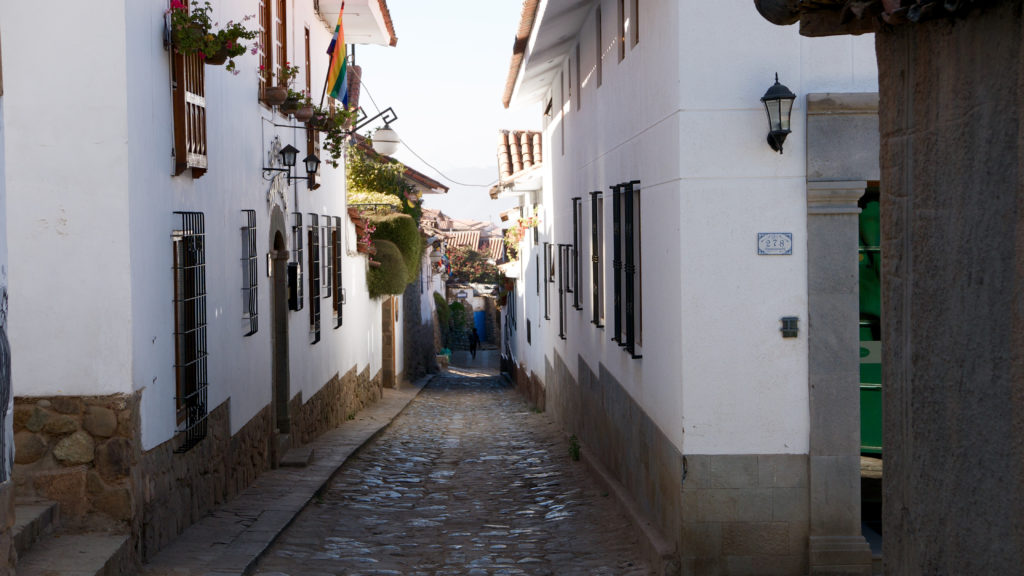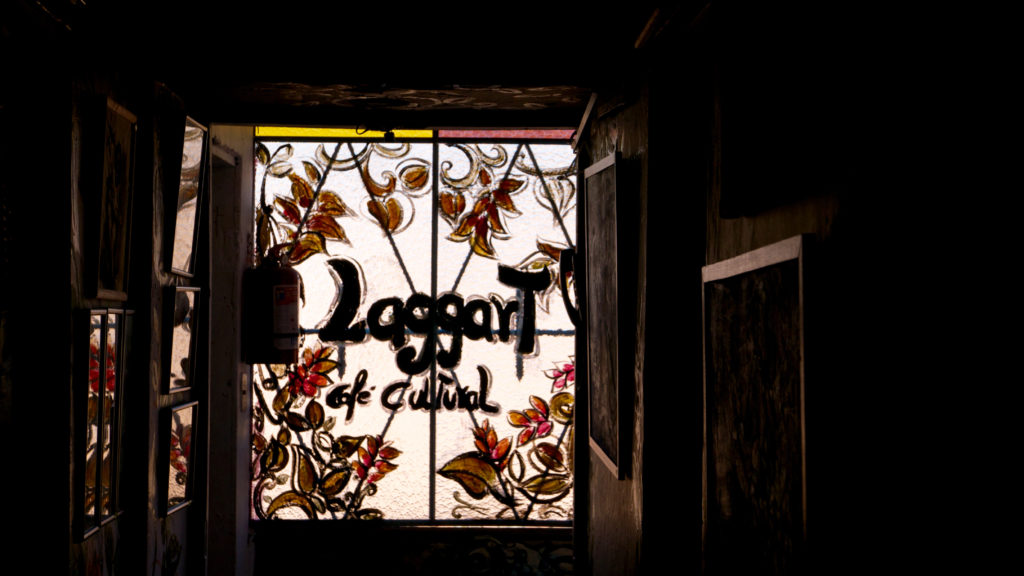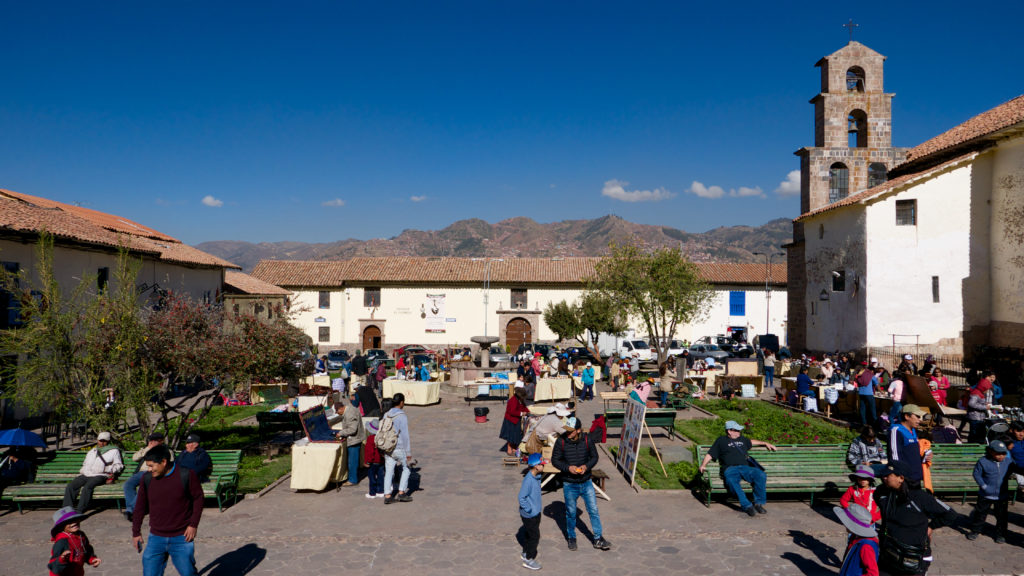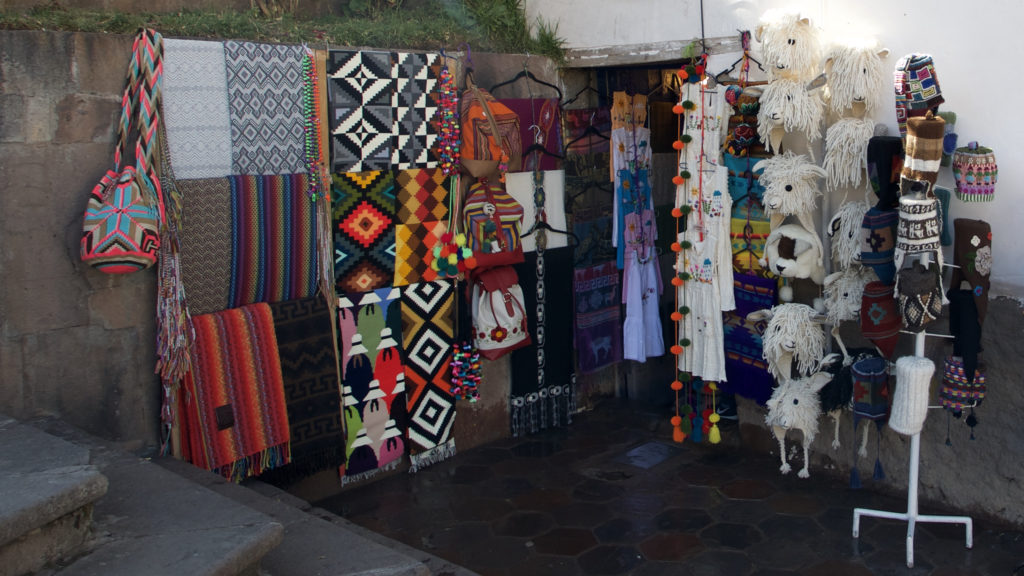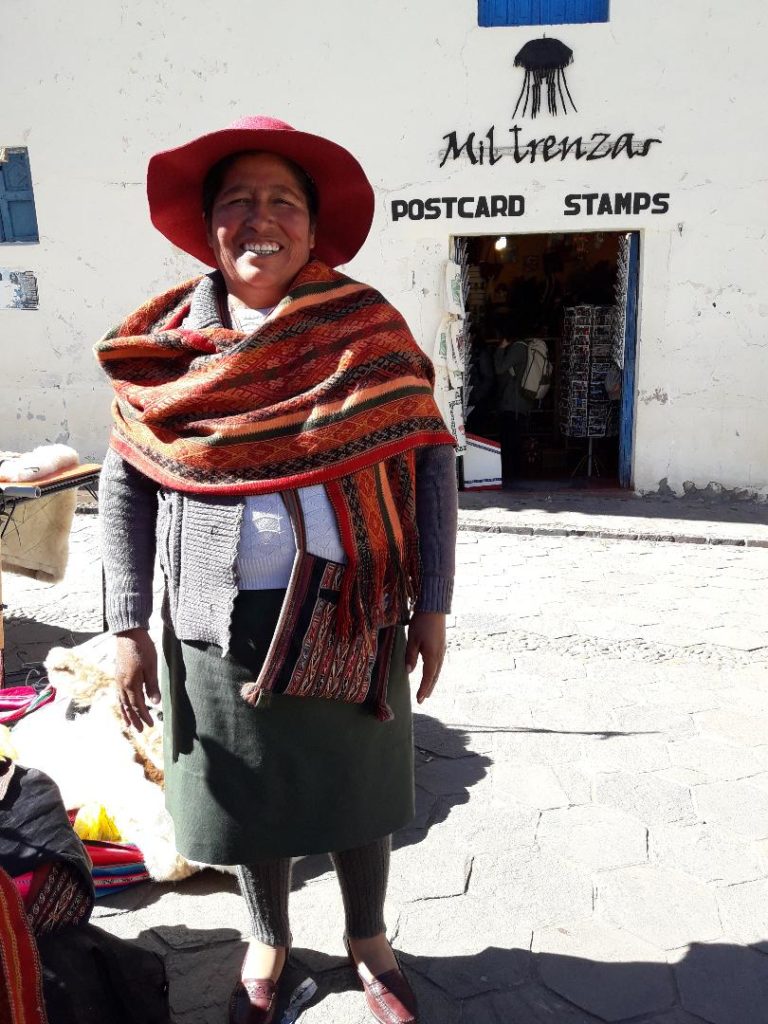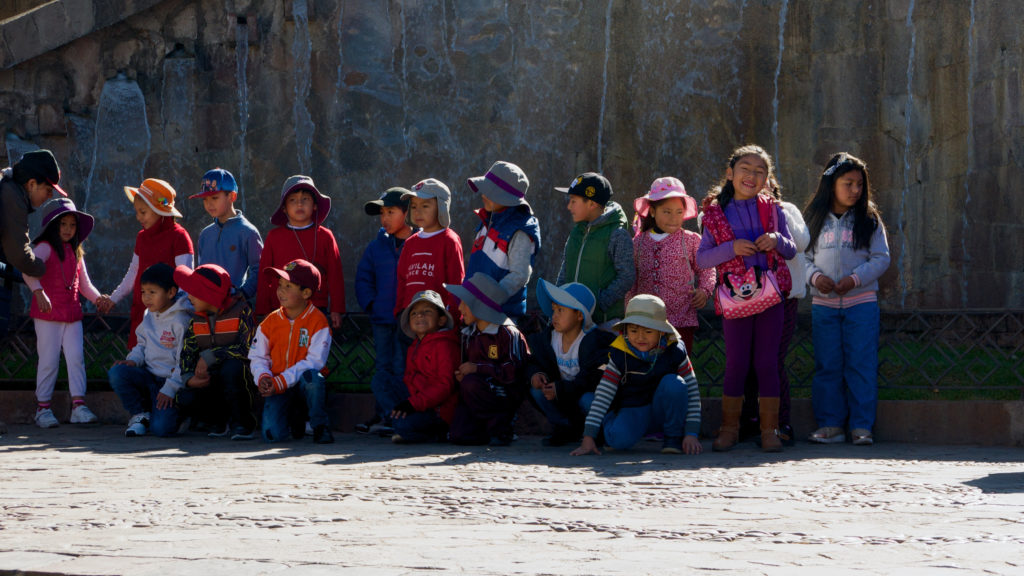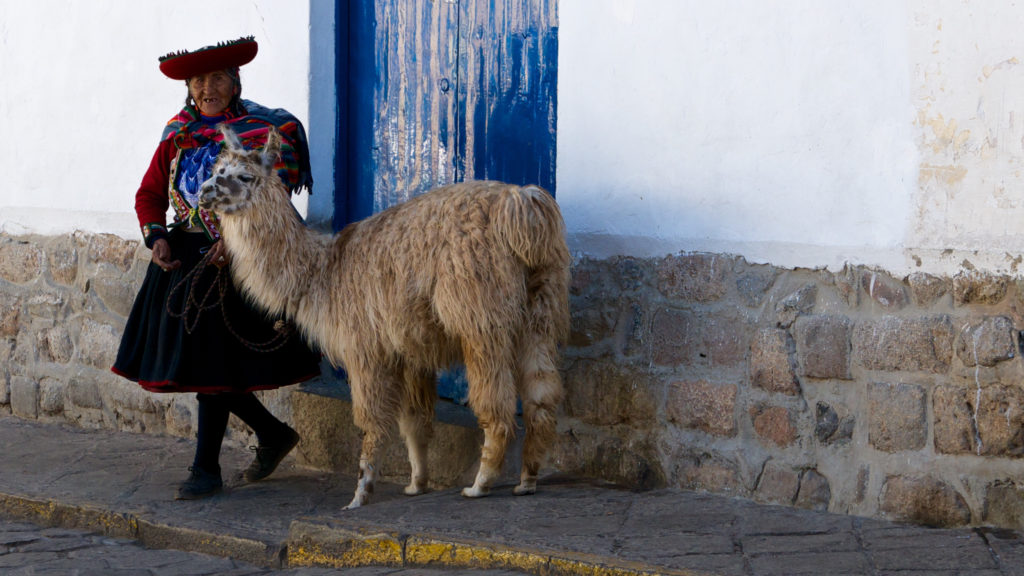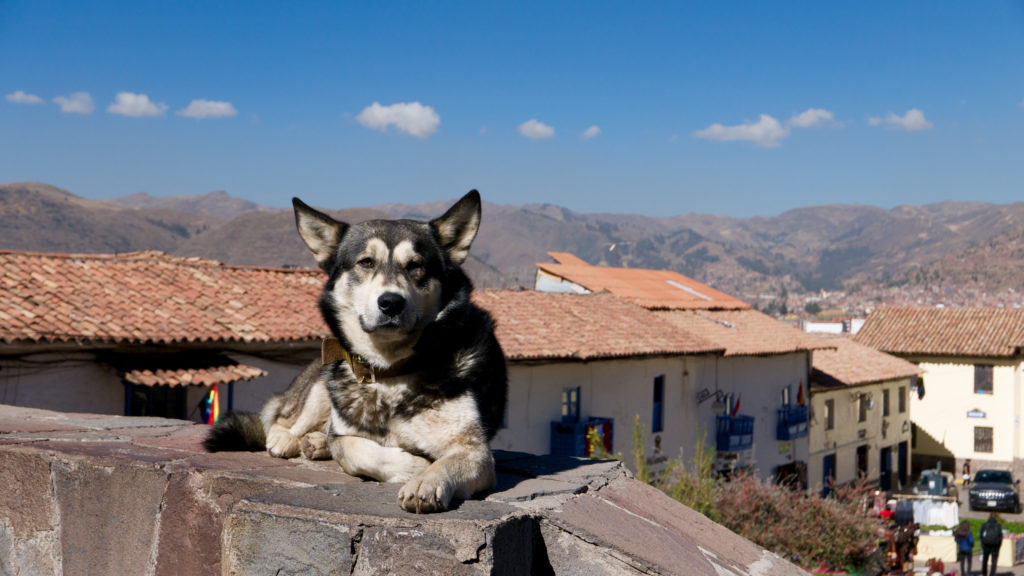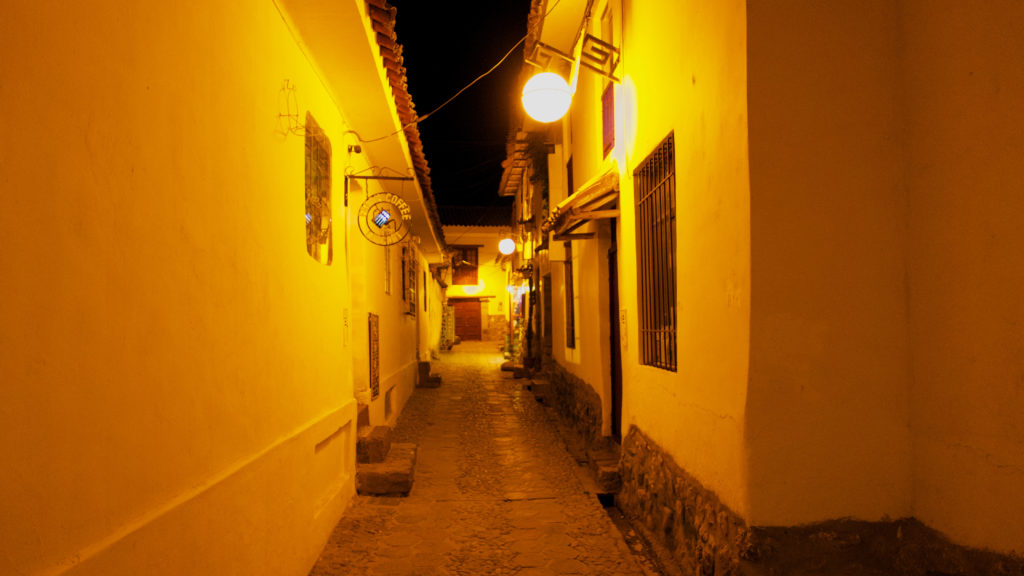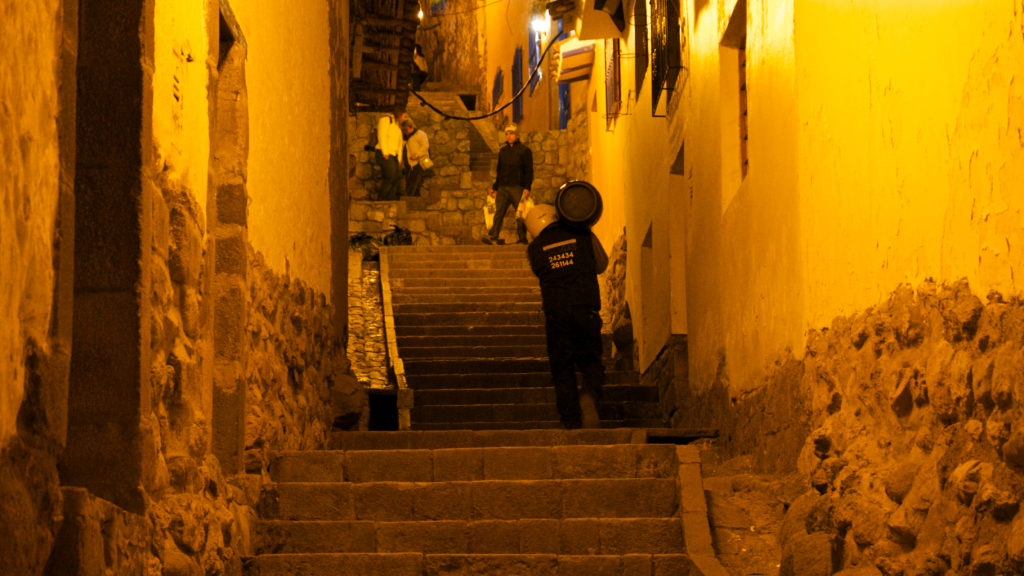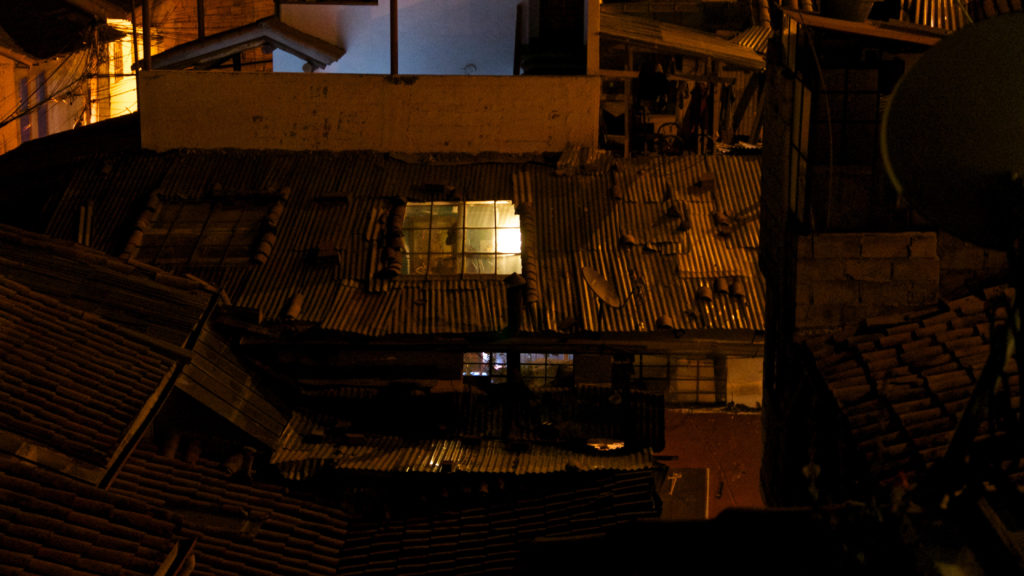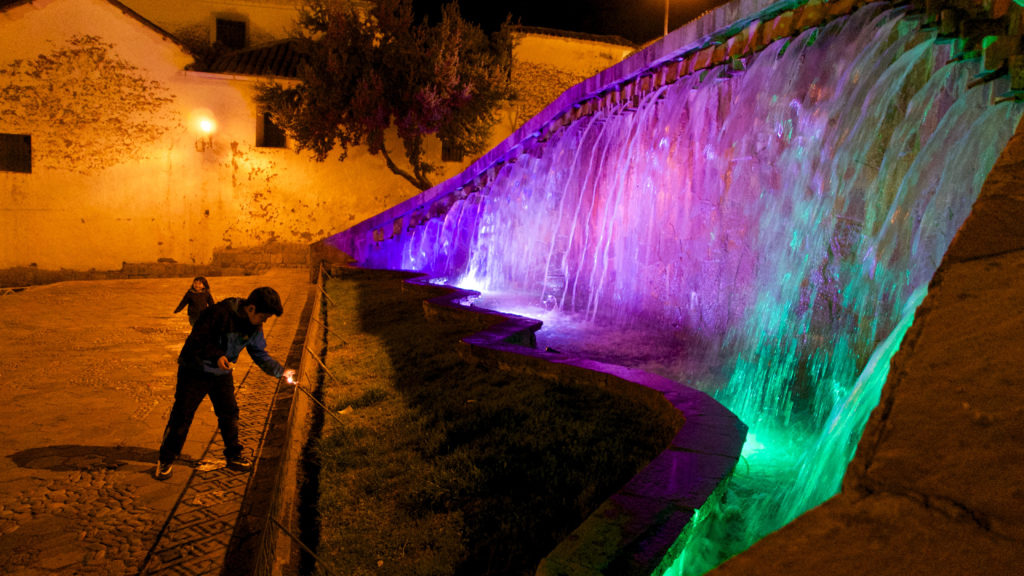While the murals and street art of Miraflores are tasteful and elegant, those of Barranco are unruly and unrestrained. I’ve photographed graffiti and public art all over the world and from what I’ve seen, Barranco’s murals are in the very top tier.
Archives for July 2018
The Barranco Scene
If Miraflores seems out of place — a prosperous upper-middle class neighborhood in a country where the per capita GDP is only about $6,000 — Barranco feels out of time. The major public square in this small Lima neighborhood is centered around a public library.That was more than enough to gladden my bibliophile heart.
Nearby stands an old electric streetcar with wooden doors and a cowcatcher front. This is a nonfunctioning museum piece, but it sets the mood for other anachronisms, like fifties-style lunch counters.
Hippies are another Barranco anachronism. They run galleries, play guitars out in the public squares, sell jewelry, and hang out with their boyfriends, girlfriends, and dogs.
And while most other parts of Lima use a color spectrum that ranges from concrete gray to Oxford brown, Barranco’s walls and buildings use a much livelier color palate.
For these and other reasons, the neighborhood is justifiably popular with tourists.
At one point, I got the strange feeling that I was being watched. I looked up and saw several large birds emerging from the rooftop of an abandoned church and circling above me. Yes, they were buzzards. I knew that the Inca Trail had taken a lot of out me, but I didn’t know I looked like buzzard food. “Buzz off!” I told them. “You’ve got the wrong guy.”
Learn from My Peruvian Travel Mistakes
From 2013 to 2015, I traveled regularly to countries in the developing world. I ventured to China, Southeast Asia, Malaysia, Bangladesh, Sri Lanka, Turkey, Tunisia, and Morocco. I developed good travel habits I was proud of and that served me well. But I haven’t been traveling as much recently and I’m obviously out of practice. My recent trip to Peru drove home to me how rusty my travel skills had become. So here’s a list of my Peruvian travel errors as a reminder to myself and as an aid to people who might be contemplating a similar trip. Learn from my mistakes!
Mistake #1: I Took the Wrong Footwear
I used to tell people that the most important thing to pack was the stuff you wear on your feet. You walk a lot when you travel. It’s a great way to see a country and its people and is often the only way to see the sights. If your feet hurt or you don’t have the right shoes, you won’t enjoy your trip nearly as much.
My old go-to travel footwear was a pair of Merrell hiking shoes. I wore them everywhere. They had good arch and ankle support. These things are important in parts of the world where sidewalks and streets are not as smooth and obstacle-free as they are in North America. They looked good, too: not too flashy but suitable for all but the most formal environments.
Strangely, though, in the last year, they began to hurt my feet. I don’t know whether the shoes or my feet changed, but those shoes simply weren’t comfortable anymore. I meant to replace them, but I hate shoe shopping and kept putting off the errand. When it came time to go to Peru, I opened my closet and was faced with a choice between Converse Chuck Taylors and FILA athletic shoes. I took the FILAs. Though they’re well-padded and comfortable for all-day wear, they don’t have the kind of ankle or arch support that’s needed for walking across uneven terrain. They have relatively smooth soles and that doesn’t provide much grip on hilly terrain. And they’re fluorescent green. I paid for this poor choice on the Inca Trail. The lack of ankle support put a lot of stress on my knee and hip muscles and left me limping for the last quarter of the trip.
Lesson (re-) learned: take appropriate footwear.
Mistake #2: I Took the Wrong Jacket
If you know me, you know I love my leather jackets. They look and feel great in spring and fall weather. They’re durable and have lots of pockets, which are good for travelers.
For walking around Lima, when the morning and evening temperatures dipped into the 50s, my old brown leather jacket was great. But it was an extremely poor choice for hiking the Inca Trail. Yes, it kept me warm—but too much so. All that exertion made me sweat and the leather trapped the heat and moisture inside. I was soon way too hot and damp. So I took off the jacket and crammed it down inside my day pack. But this added a good 12 pounds to my day pack and added so much bulk to the pack that it was hard to get anything in or out of the pack. I felt the extra weight as I struggled to get enough oxygen while climbing up the train ascents.
It would have made much more sense for me to have taken a down or fiberfill jacket — something lightweight that could be vented easily. I own a couple I could have used. But I was thinking more about walking around urban Lima than about hiking the Inca Trail. I should have gone for functionality over style.
Mistake #3: I Didn’t Do My Homework
Ah, arrogance. It’s so easy to fall into. “Machu Picchu? I’ll just go to Cusco and get a bus there or something and walk around and see what’s to be seen.” That was the extent of my planning. And in a lot of places, that would have been enough. But by the time I realized that there was a lot more to it than that, it was almost too late. And to make matters worse, I had laid out nonrefundable hotel deposits on accommodations that just wouldn’t work for what I wanted to do.
Had I researched this trip with my usual diligence, I would have realized some pretty basic facts:
–You need a permit to hike the Inca Trail and such permits are limited in number.
–You need a ticket to enter Machu Picchu and such tickets are limited in number.
–You can’t enter Machu Picchu on your own; you have to have a licensed guide with you at all times.
–Trains and buses that operate in the vicinity of Machu Picchu are booked up months in advance.
I remember the day when all those facts hit me. And I wanted to hit myself back. How could I have been so careless about my plans? I had to scramble to save my vacation. Fortunately, I lucked upon Adios Adventure Travel. Unlike some of the other outfitters I contacted, they were fine with working around my schedule instead of forcing me into theirs. I rarely hire outfitters, travel agents, or guides, but this was one instance where I needed help. Adios came through for me and arranged for all the transfers, transportation, and accommodations I needed for the Machu Picchu leg of my trip. But it was a near thing. Had I discovered the fundamental planning errors I made a couple of weeks later, I probably wouldn’t have been able to make the trip at all. As it was, I lost some money on useless hotel deposits, but I saved my trip.
Mistake #4: I Didn’t Train Right
I knew that hiking the Inca Trail and climbing around Machu Picchu would be a major physical challenge. And so in the nine weeks before I left, I made a concerted effort to get into shape for it. I ran the stairs at my apartment building. I lost eleven pounds. I worked out with free weights. I took long walks. I took my vitamins and ate my Wheaties. But the Inca Trail kicked my sorry ass anyway.
The elevation was part of it—and frankly, I don’t know what I could have done short of running with a plastic bag over my head to cope with it. Puerto Rico is a few hundred feet above sea level. Machu Picchu is over 8,000 foot above sea level. Cusco is 3,000 feet above that. I took Acetazolamide before and during my stay at elevation, but I hated the side effects it caused. Though I didn’t get altitude sickness, I was still chronically short of breath out on the trail.
I should have done a lot more to train with sustained aerobic activity. My aerobic efforts tended to be short but intense. Long and moderate would have been better.
Mistake #5: I Didn’t Read the Fine Print
As my mistakes on this trip go, this was a minor one, though it could have been more significant if I’d run into any serious problems.
I have a Samsung Galaxy J7 smartphone that accommodates two SIM cards. When I travel abroad, I simply buy a local pay-as-you-go SIM card and slide it in. Then I’ve got an in-country phone number and data plan that is far cheaper than paying international roaming charges on my regular US account.
When I was in the Lima airport, I went to a Claro kiosk and saw a sign promoting a one-week all-you-can-eat SIM card for a very reasonable price. I bought it. And it was great for data. But when I wanted to make an in-country phone call, I had to dial a six-digit access code first. Supposedly I could have used this to text out of the country as well, though I was never able to make that work.
As it turned out, the Claro data plan was enough to keep me connected via WhatsApp and Facebook Messenger. But on the one occasion where I had to make an actual phone call, it wasn’t very useful. I didn’t want to be fiddling around with access codes and trying to figure out if I needed to use a country code or a +1 to make it work. Next time, I need to find out more about these SIM card deals before I plunk my money down.
Return to Machu Picchu
The next morning, I rendezvoused with Ismael. The massage I’d had the night before had helped with my hip, but my right knee was still talking to me. I downed a healthy dose of Tylenol and we were on our way. A bus took us on the 25 minute drive from the center of Aguas Calientes to the entrance to Machu Picchu.
How does one describe a place that’s been dubbed as one of the new seven wonders of the world? More than any other of the world’s most famous historical and cultural monuments, Machu Picchu is beautiful because of how it relates to its surroundings. I can imagine, say, the buildings of Angkor Wat in another place, but Machu Picchu’s structures would lose their ability to awe if they were removed from their mountaintop location. It takes nothing away from the genius of the people who designed and built Machu Picchu to suggest that if the buildings there were transported to an open plain, they’d just be little more than a set of old but not terribly remarkable stone structures. In their environment, though, they are sublime.
The people who built Machu Picchu were first-rate architects who used the dramatic natural backdrop of the mountaintop setting to bring their designs to life. They worked with broad brushes. There are few elements of minute detail left in the ruins of Machu Picchu. The rocks are honest rocks. They fit together perfectly — and we still don’t know how the Inca managed this feat with the tools available to them — but they haven’t been ornamented or decorated.
Machu Picchu struck me as an engineering marvel. I’m not the only one to feel that way. The American Society of Civil Engineers conducted a study of the ruins and concluded:
Machu Picchu represents civil engineering and environmental design in harmony with its environment, along with the use of the design standards of the Inca Empire to create a visually beautiful royal estate. Site preparation and foundation engineering are exemplary, hydrological and hydraulic engineering were thorough, and its urban drainage design sets a standard of care for modern engineers. It is a prime example of early, integrated city planning in the western hemisphere.
My guide Ishmael, who runs a hostel in the area and has spent many years visiting and studying Machu Picchu, believes that it was built to be a kind of university for the Inca empire. Students came there from all over the Inca territory to study astronomy, botany, and other subjects. The conventional view, however, is that Machu Picchu was a royal estate for the emperor and has family. But that view and Ismael’s interpretation are not mutually exclusive. Concepts like “university” and “royal estate” are our way of ordering our society. Presumably Inca society was ordered differently. It’s not hard to imagine that Machu Picchu could have been both a royal retreat for Pachacuti and his family as well as a center of learning.
Another way to view Machu Picchu is as an ancient observatory. The sun rises and sends its rays through very specific windows on the days of the equinox and the solstice. This rock has been carved and placed to map out the constellation of the Southern Cross, which was obviously known to the Incas 500 years ago.
Machu Picchu may not have been finished before it was abandoned by the Incas after only 90 years. This pile of stones was presumably the Incas’ quarry and spare parts department.
The authorities who run Machu Picchu have done an excellent job of keeping the site clean and noncommercial. There are no trash cans in the complex itself; you have to pack out what you bring in. One of the functions of the guides is to make sure that not so much as a candy wrapper or water bottle cap gets thrown on the ground. And you can’t get anything to eat or drink inside the complex unless you are a baby llama.
This is a monument to the guinea pig, a Peruvian delicacy that I did not try, but that apparently sustained the Incas.
I was lucky to have had such an excellent guide during my time on the Inca Trail and in Machu Picchu. Ismael Huaman Zapata was patient, good-humored, encouraging, and very knowledgeable about the historical and natural world of the Incas. He’s got big plans to build an eco lodge and run tours to organic coffee farms. I hope he realizes them — but in the meantime anyone who needs a guide to Machu Picchu couldn’t do better than to have him as a companion.
When my stay was over, I took the bus back to Aguas Calientes and then boarded the train for Ollantaytambo. I was sore and exhausted, but I felt a powerful sense of physical accomplishment and a deep satisfaction in finally having experienced one of the most iconic landmarks to humankind’s artfulness and ingenuity.
Overnight in Aguas Calientes
I limped off the bus and found myself in Aguas Calientes, a town devoted solely to serving the hoards of travelers coming to Machu Picchu.
In addition to offering room and board, AC is the point of departure for the buses that run up to Machu Picchu multiple times a day, as well as for the trains that run to Ollantaytambo.
Appropriately enough, the town features a large statue of the 15th century Inca emperor, Pachacutec, together with his animal symbols: the condor, the puma, and the snake. The condor represents the heavens and the connection between earth and sky. The puma represents life on earth in its power and strength. The snake represents the underworld, but also to the Incas suggested wisdom and knowledge.
Other symbols are more contemporary and speak to the transient nature of modern day Aguas Calientes.
The town itself isn’t beautiful, but there is a certain charm to some of its architecture and the way it reveals its own structural support.
As tourist towns go, AC does its business well. It was pleasant and had everything a hiker would need: food, drink, transportation, music, and — in my case — a masseuse who eased some of my aching joints. I was so tired I barely remember where I ate or how I hobbled back to my hotel and the sweet promise of sleep.
Sucking Wind on the Inca Trail
Yorkee came to pick me up well before the sun rose on July 1. I stashed most of my luggage at the Encantada Hotel and took only a small day pack with me. We drove 90 minutes northwest out of Cusco through the blasted brown Andean countryside. As the sun rose, it lit up the snow-topped mountains in the distance. Some of their peaks topped out at 20,000 feet.
It was cold, hardscrabble scenery. Just when it looked like we were about to drive straight into the side of a mountain, the road curved and began to descend into a valley.
I looked down at the town of Urubamba. Smoke drifted from wood fires that were presumably keeping the citizenry warm. A wispy ceiling of smoke covered the town. The mountains were so large that I could see the shadows creeping along their slopes as the sun rose.
At Ollantaytambo, the scene at the train station was cheerfully chaotic. Hundreds of people, many of whom didn’t speak Spanish, tried to inveigle their way onto the proper train.
I said good-bye to Yorkee and boarded the train. I wasn’t sure what to expect of Peru Rail. Though the carriage looked nondescript on the outside, inside I found a comfortable, contemporary environment that would put Amtrak to shame. We pulled out of the station right on time at 7:45 am.
The train ran through valleys, over small streams, through tunnels, and upward into the mountains. After a half-hour ride, we arrived at kilometer 104 and stopped. Kilometer 104 isn’t a station — it’s simply a marker that coincides with the head of the one-day segment of the Inca Trail.
There I met up with Ismael, my guide: the man who was to become my teacher and coach. I showed my permits to a guard at the gate—the number of people who get access to the trail each day is strictly limited to 500—and we were on our way.
The first 100 meters took me over a suspension footbridge. I thought that was cool, but soon realized that that the planks of that bridge were the only smooth, flat surface I would traverse for the next 16 kilometers.
I’d tried to prepare for this trek. I didn’t want to be That Guy Who Was Carried to Machu Picchu on the Back of a Llama. In the nine weeks prior to my departure, I worked out almost every day and shed eleven pounds. I ran the stairs up to my 11th floor apartment. I hefted free weights. I took long walks. I planked. But it was not enough — not enough of what I really needed, which was sustained intense aerobic activity in a thin-oxygen environment.
I also didn’t have the right shoes; my old Merrills had become oddly uncomfortable for me in recent months and I’d meant to buy a new pair but kept putting it off. I wound up hiking in well-padded but flat-soled FILA athletic shoes that gave my ankles no support whatsoever. I’d dressed for seriously cold weather, but once again, the intense UV radiation kept me warmer than I wanted to be. I stripped down to a t-shirt and regretted all the weight and bulk of the useless heavy clothes in my day pack. Such were my mistakes.
I was quickly brought up against the inadequacy of my training and my failure to adjust to the thin air. I had to stop every 100 meters or so to catch my breath. Each stone on the trail was canted at a different angle, so the mere act of walking required both constant vigilance and the unaccustomed stress to the leg muscles and joints.
We stopped at Wiñay Wayna, a restored Incan ruin whose name means “forever young” in Quechua. I wondered: did the ancient Inca people have to pay royalties to Bob Dylan to use the name? The dozens of terraces here were used to grow crops in mountainous terrain, just as they are in Asia. The sheer amount of human labor that must have been involved in building, maintaining, and farming these terraces stunned me.
After about 12 kilometers, my right knee and hip began to let me know they were not happy with the situation. I carried a lunch with me, but had no appetite. I downed three liters of water along the way and was parched for the last quarter of the route.
We stopped again at a campsite that was being used by people who had taken a more leisurely approach to the Inca Trail. They had llamas there, presumably to use as pack animals.
Driving us forward was the knowledge that the last bus from Machu Picchu left at 5:30. If we missed that, it was unclear how we could get to Aguas Calientes. I was fairly sure we could find a way, but I was determined not to need to.
We finally came through the Sun Gate at Intipunku. Down below us, partially obscured by the high mountain glare from the western sun, was Machu Picchu in all its glory.
The trail was pretty much downhill from there, but that did my knee and hip no good. I gimped down to the bus with all of seven minutes to spare.
I privately celebrated the achievement. Eight years ago, I celebrated turning 50 by taking on the biggest physical challenge of my life: a weeklong bicycle tour through southwestern Colorado they called Ride the Rockies. That remains, overall, the most intense physical undertaking of my life. But on a single-day basis, hiking the Inca Trail was more difficult than anything the Rockies put in my way. And more rewarding, too.
Arrival in Cusco
The ride up to my hotel would’ve seemed more alarming if I’d been fully awake. Later I saw the complex three-point turns and backing maneuvers that even the smallest cars had to effect to get from place to place in those narrow, ancient streets. I saw what happened when cars met head on: there’d be some peaceful, unspoken negotiation and soon one car would be accelerating down the street in reverse at while the other followed closely. Makes me think that auto body shops here must make a lot of money.
But none of this registered on me in my first hours in Cusco.
By the time I got to the Encantada Boutique Spa Hotel, I’d been awake for 28 hours. I’d left from Puerto Rico, roughly at sea level, and been transported to a city 11,000 feet up. Sleep- and oxygen-deprived, I wasn’t at my observational best.
My room wasn’t ready, so I ventured out to see what I could of the town. I was definitely in a tourist district, judging from the number of hostels and coffee shops.
I walked the road downhill to the Plaza San Blas and watched vendors prepare for the Saturday morning market.
This beautiful Alpaca scarf came home with me. Adelaide, the woman in this picture, makes them with her family. Some of the colors, she said, come from an emulsion made of ground up insect wings.
In front of the wall that separated the plaza from the street above, a group of young children gathered and sang a song while their adoring parents looked on.
I took a photo of an old woman with an alpaca. She then chased me—the woman, not the alpaca—halfway across the plaza to demand money for the privilege of being my model. I was bemused and gave her five soles. Presumably she split it with the alpaca.
I chatted with some hippie artisans and bought a little petrified animal tooth while her dog looked on.
It was wonderful to be in Peru at last, but I urgently needed sleep. The hotel lay uphill from the plaza. I trudged up the road, feeling like someone had reached into my back and pulled out my batteries. Though the air was cool, the high altitude and clear blue skies felt hot to me, presumably due to the higher UV intensity. Feeling spacy and disoriented, I made it to the hotel lobby and sank into a chair. The desk clerk brought me a cup of cocoa leaf tea, which is a homegrown remedy for soroche – altitude sickness. It revived me, somewhat. Yes, that’s the stuff cocaine is made from.
My room was ready and so was I. I slept four and a half hours. When I got up it was late afternoon. I accepted a dinner invitation from Jacquie Whitt, the woman behind Adios Adventure Travel, the outfitter that did such a fine job of arranging my Inca Trail hiking permit, my Machu Picchu entry documents, my transportation, and my guide. Jacquie had been doing this for ten years and it showed in her easy competence. She’s first come to Peru with students from the Friends school where she taught. And she kept coming back. That made sense to me: the best teachers are tour guides, and vice versa. I had a whole pizza for dinner—I figured I’d need all the carbs I could get for the next day’s hike.
By the time I polished off the last piece, the blazing sun was gone and Cusco took on that Spanish colonial dolor I know and love, an admixture of unsolved mysteries and unrequited love.
Down at the Plaza San Blas, the vendors were gone. There was a kid playing with firecrackers in front of the fountain. I liked his naughtiness.
I headed back to the hotel early. The next day, I knew, would be a long one.
